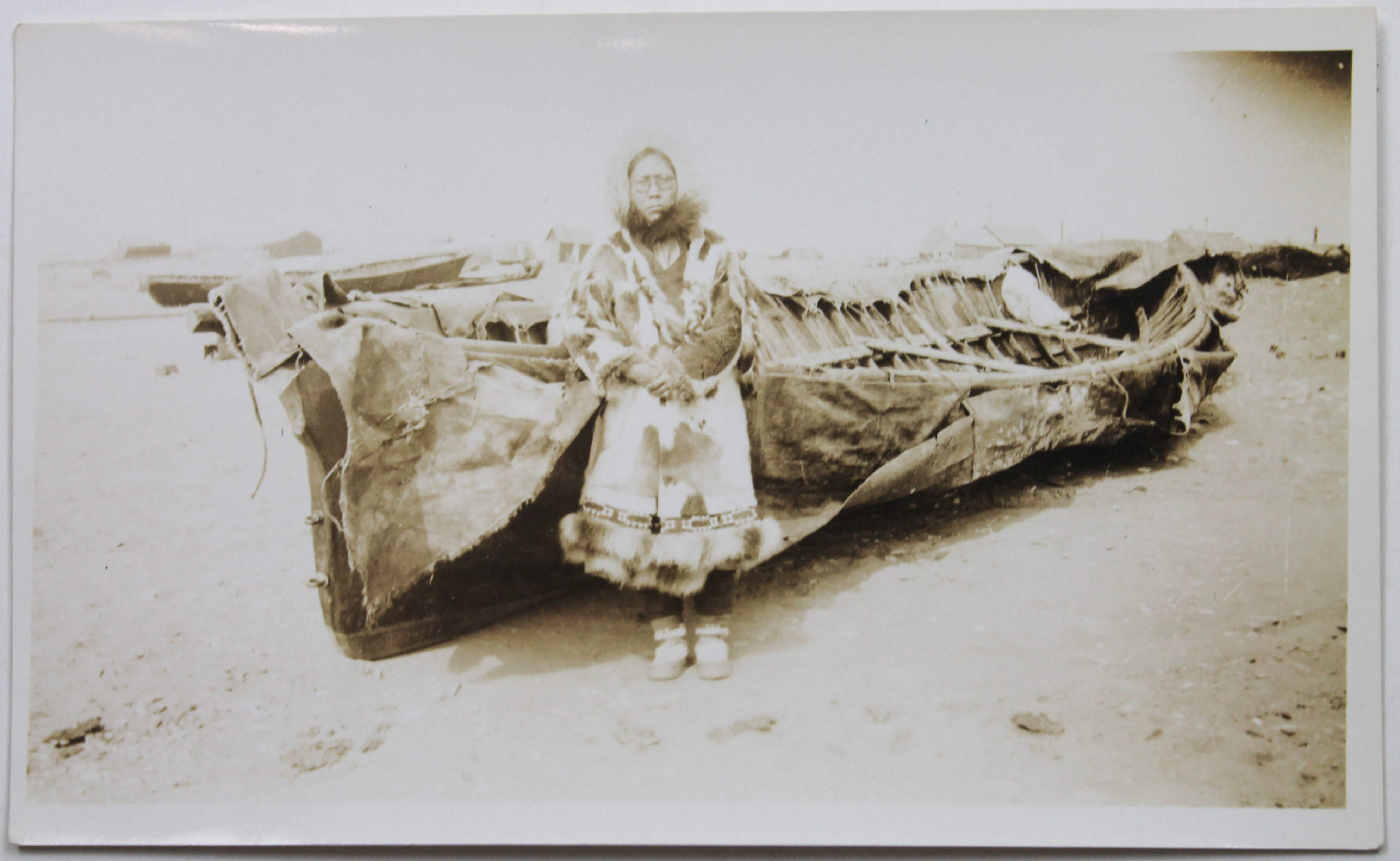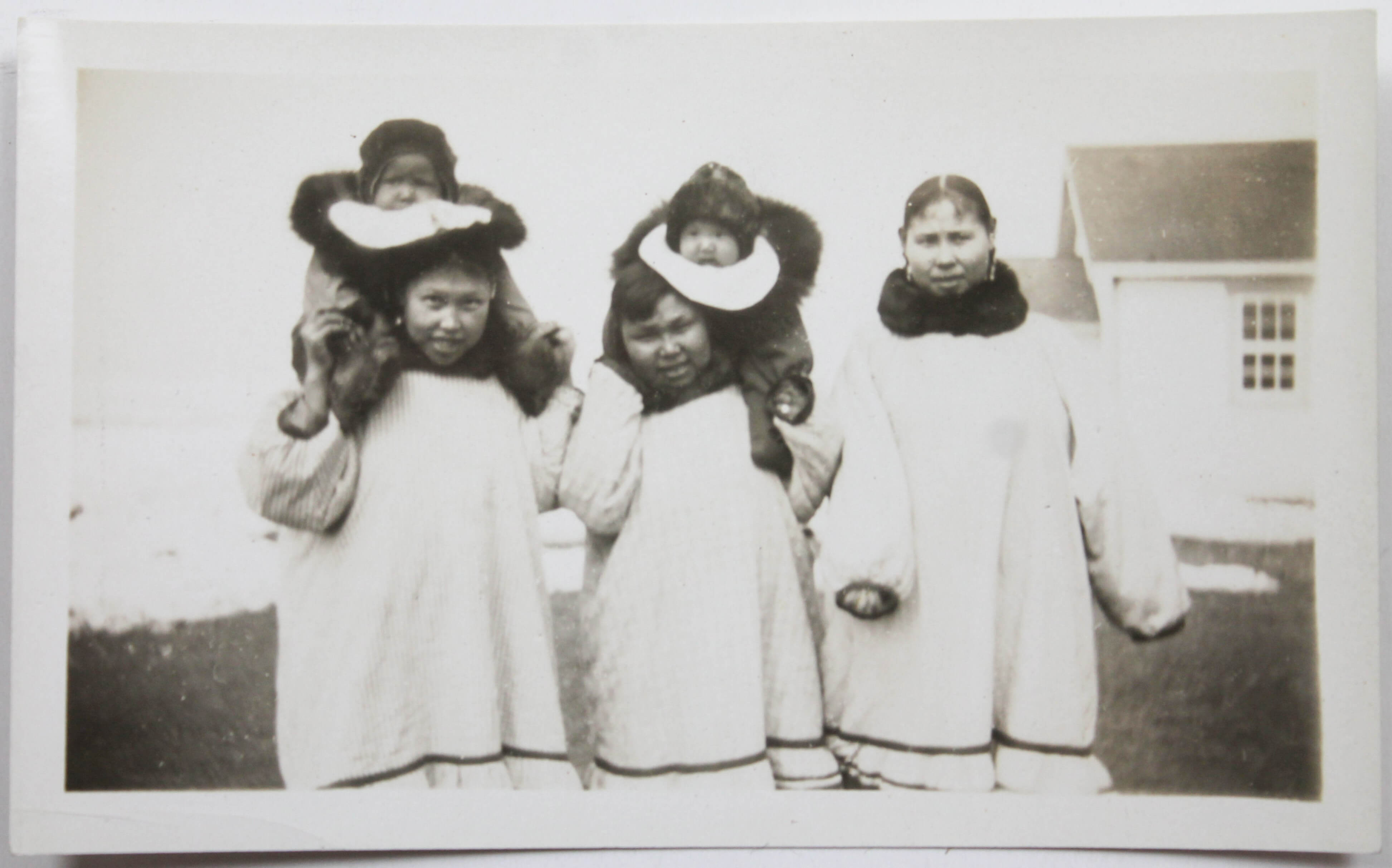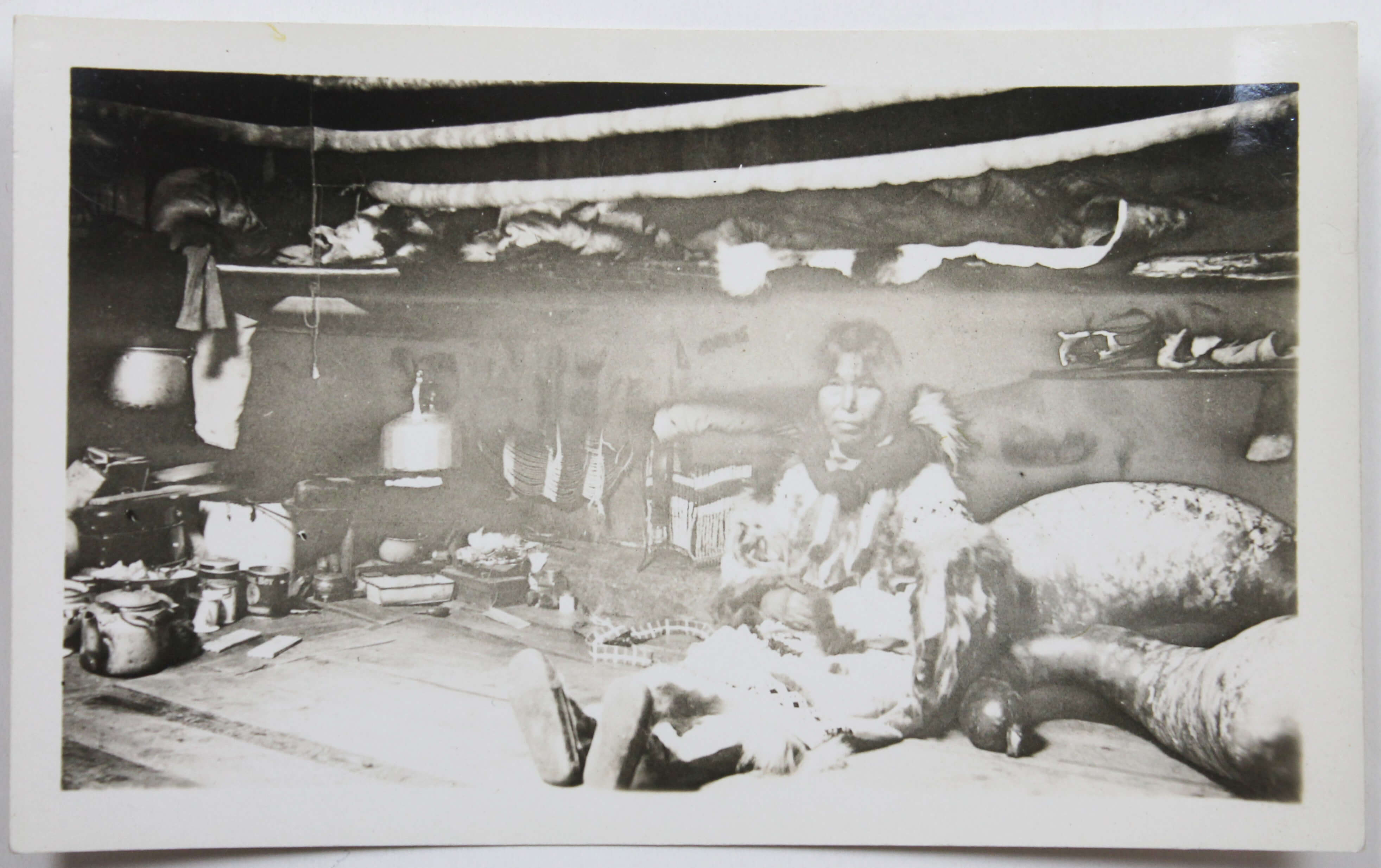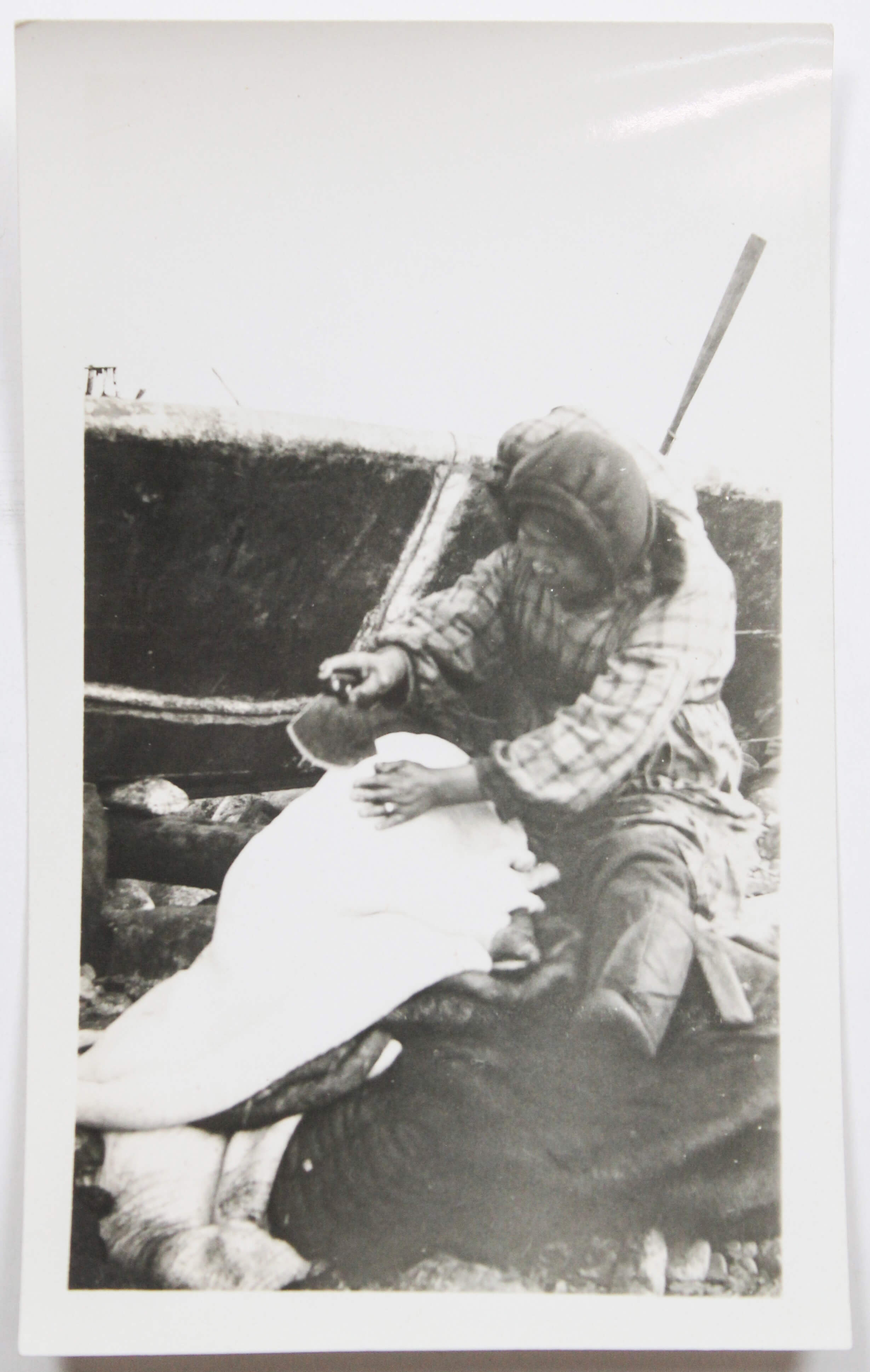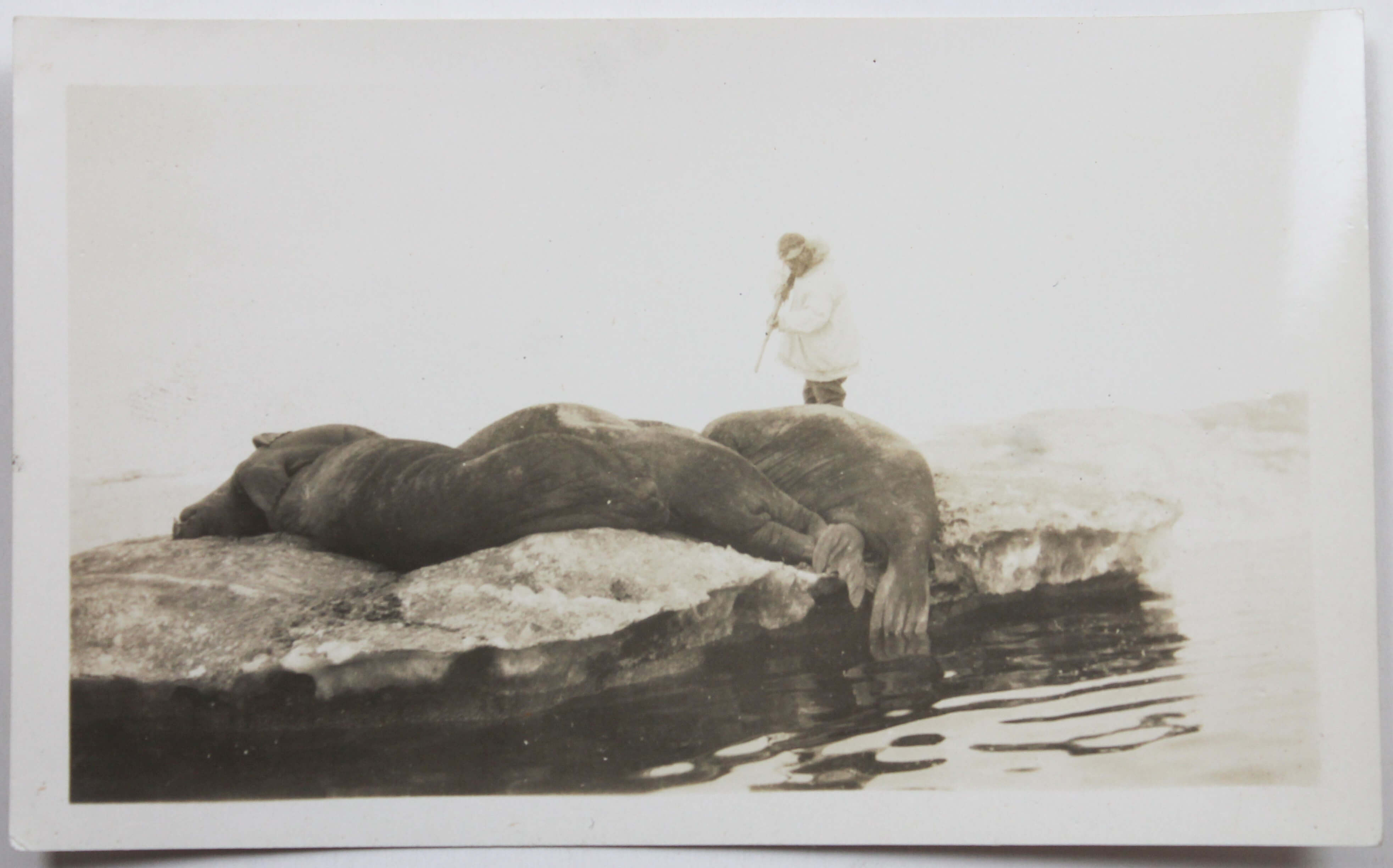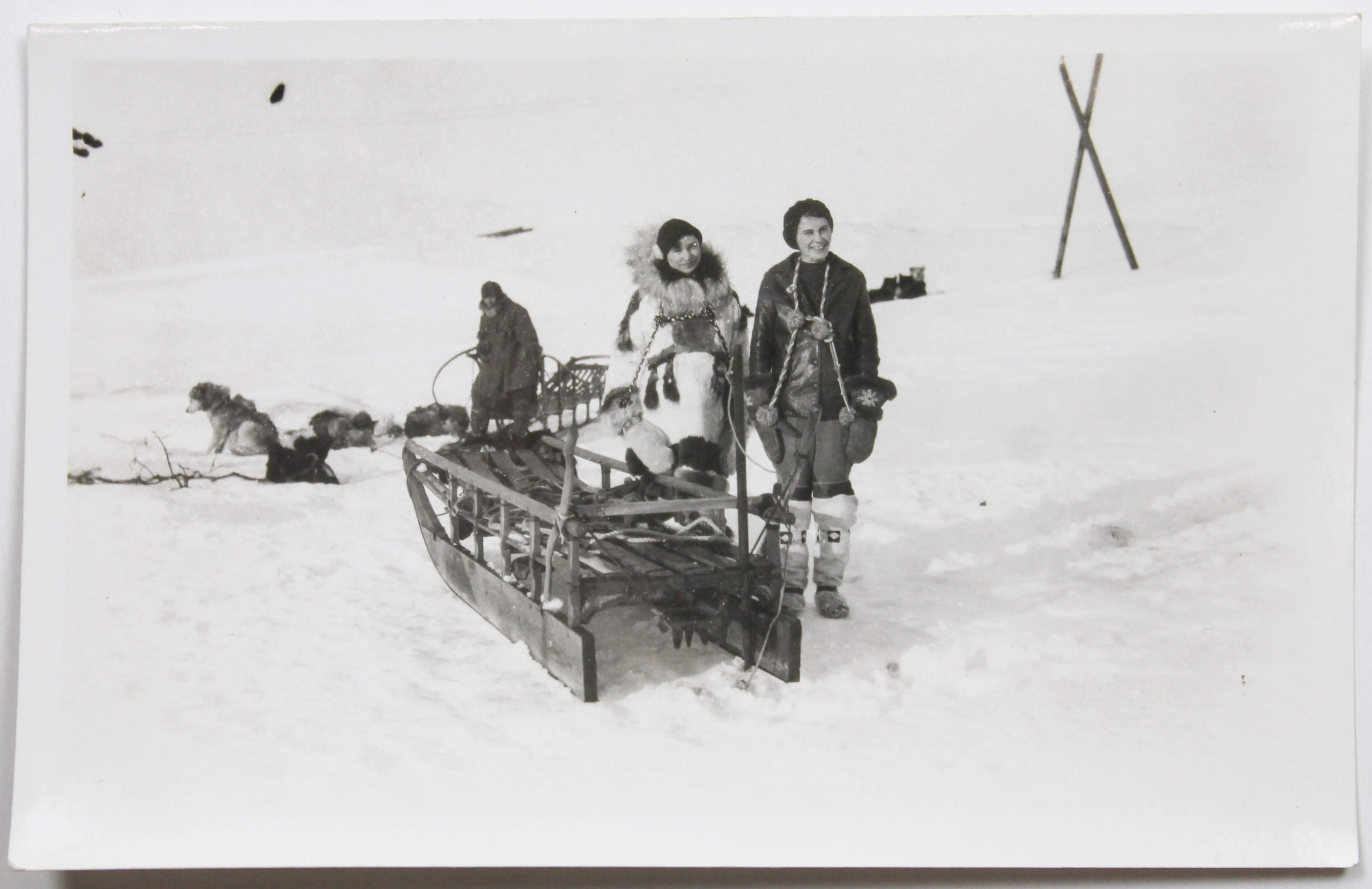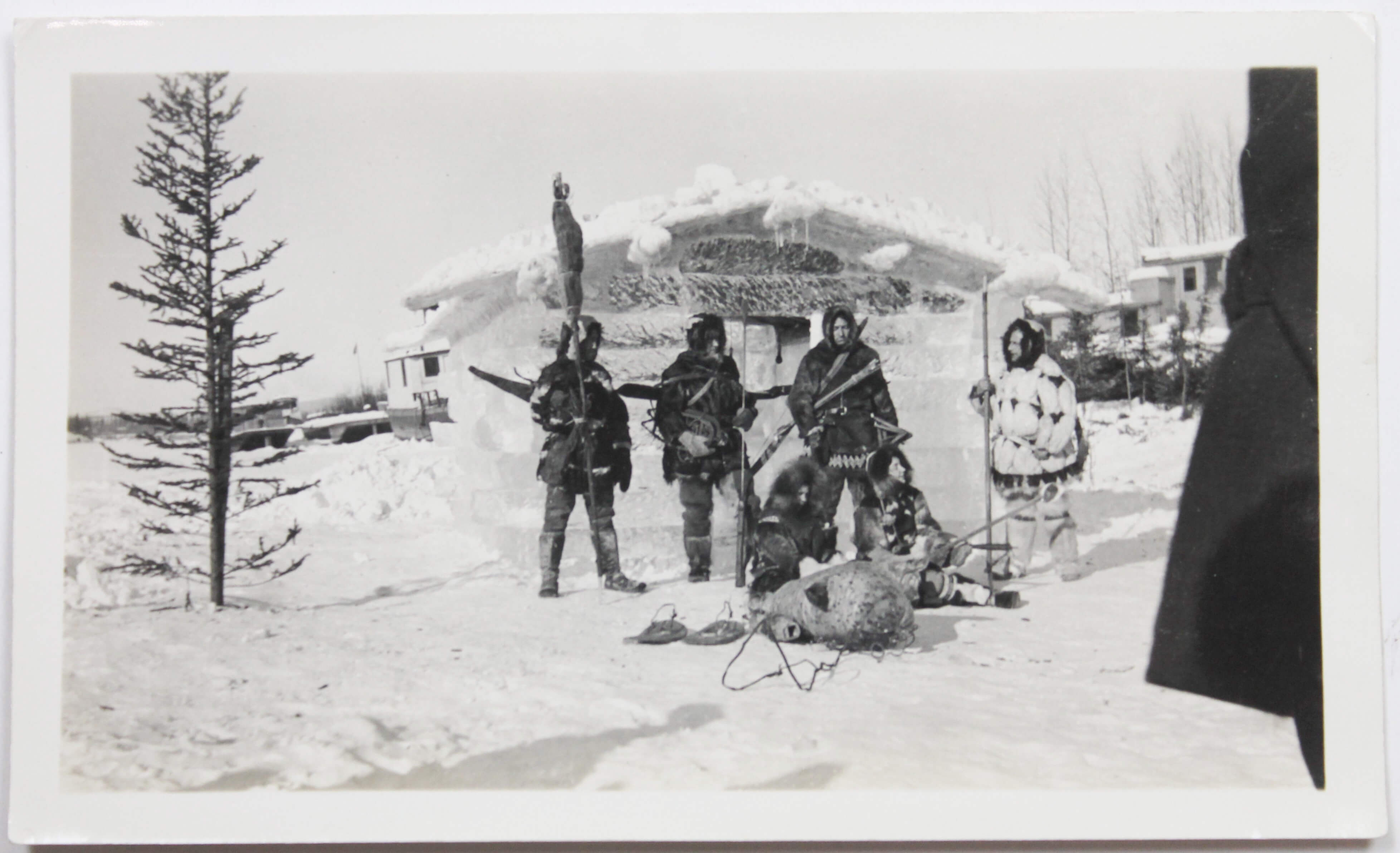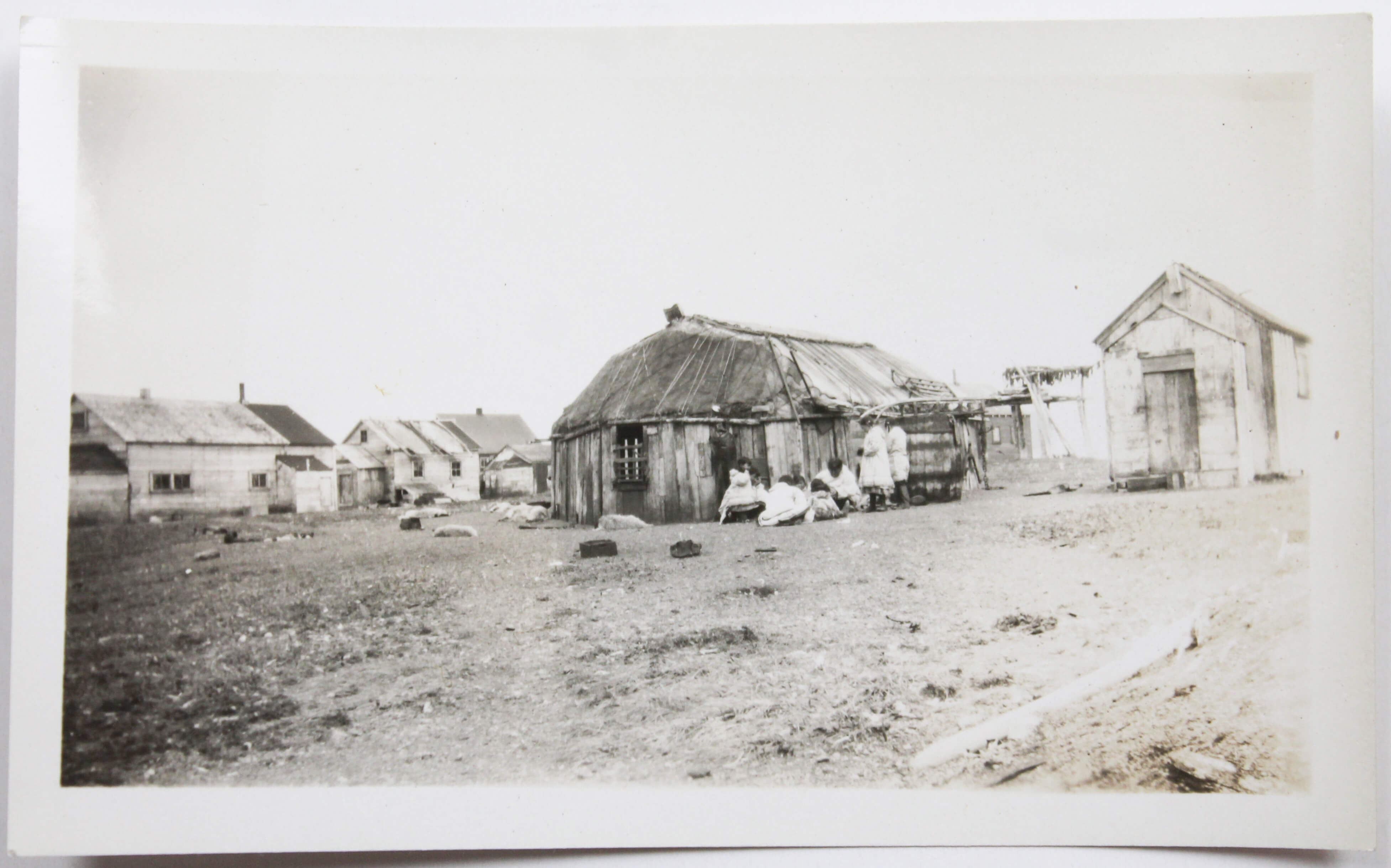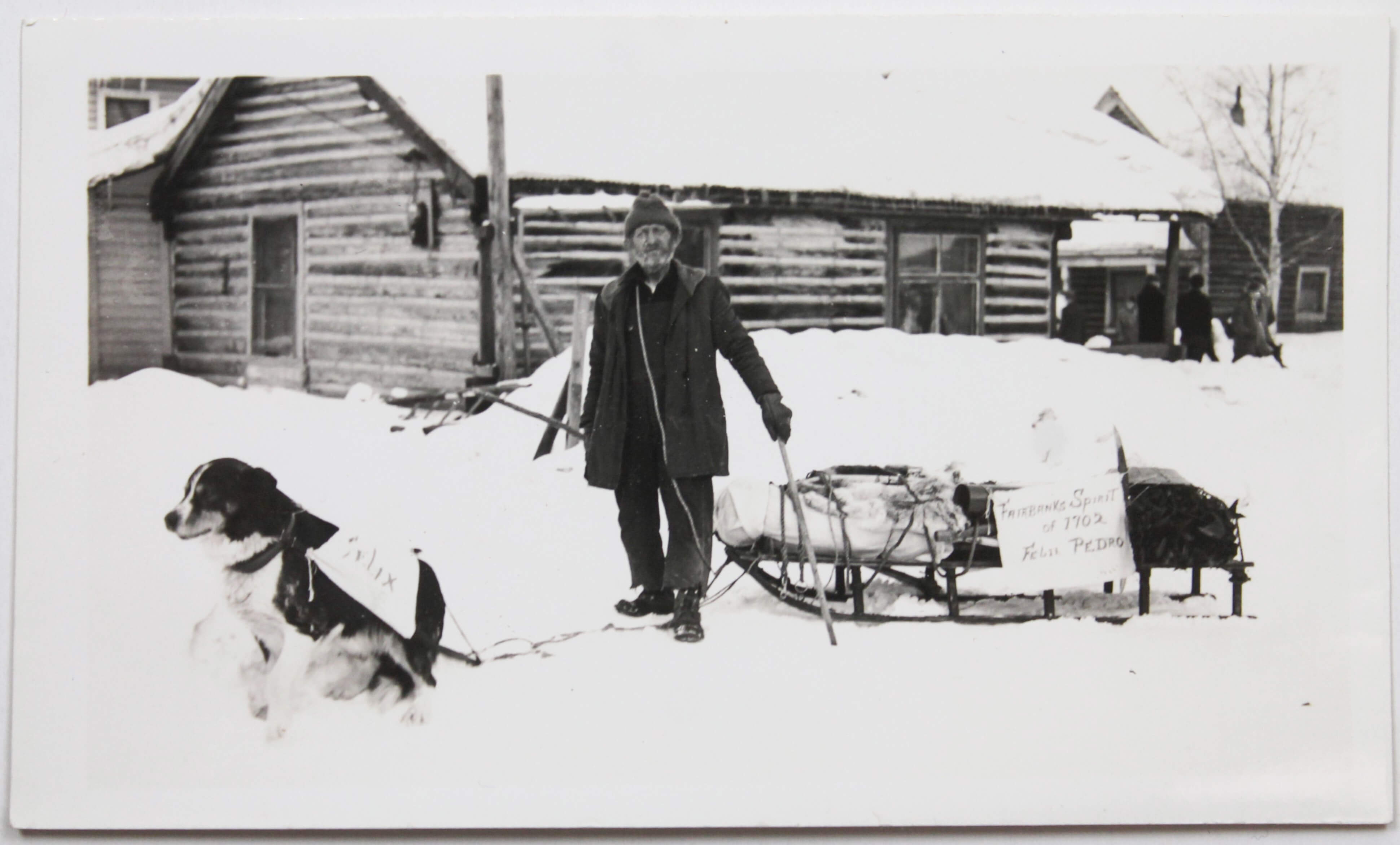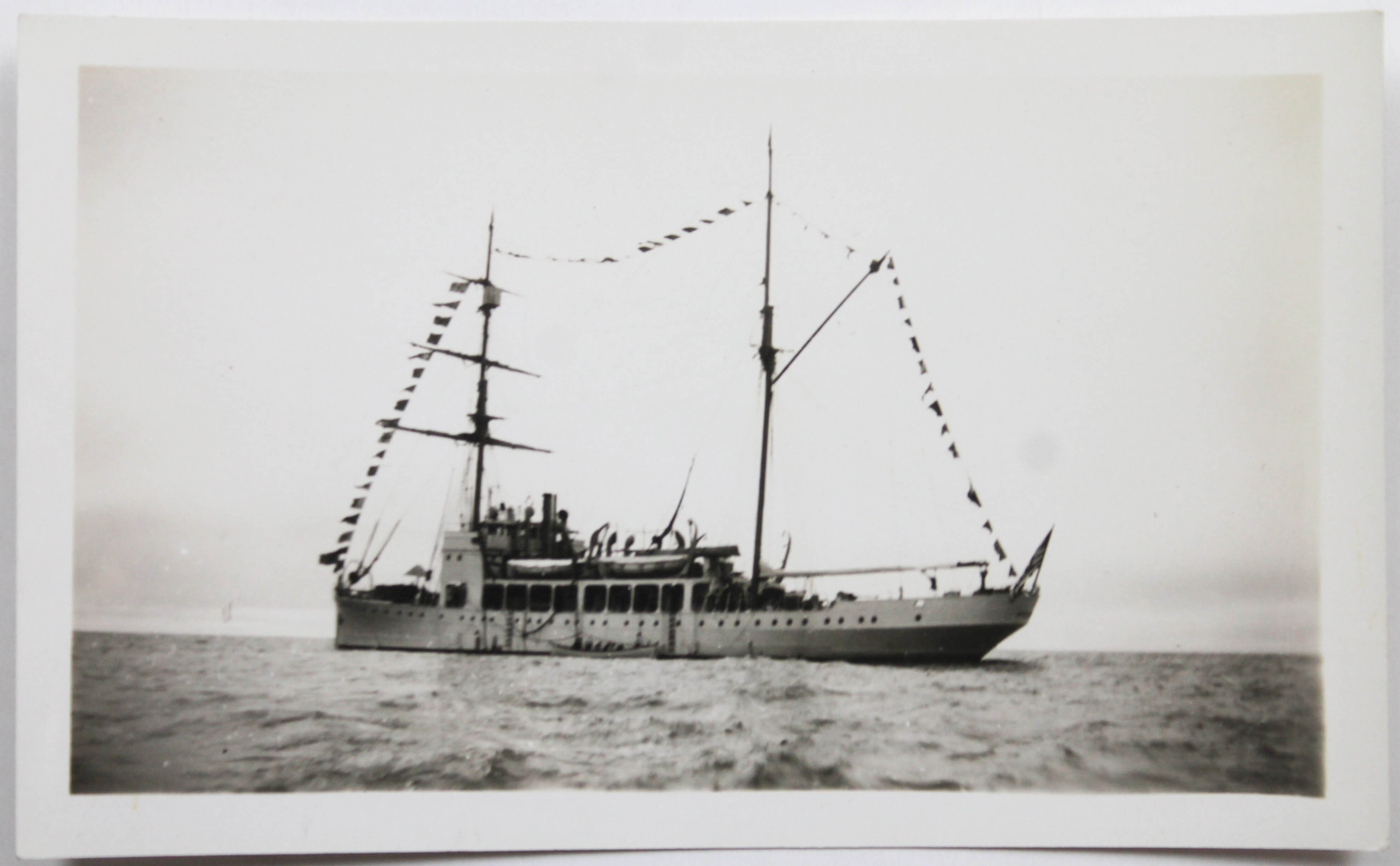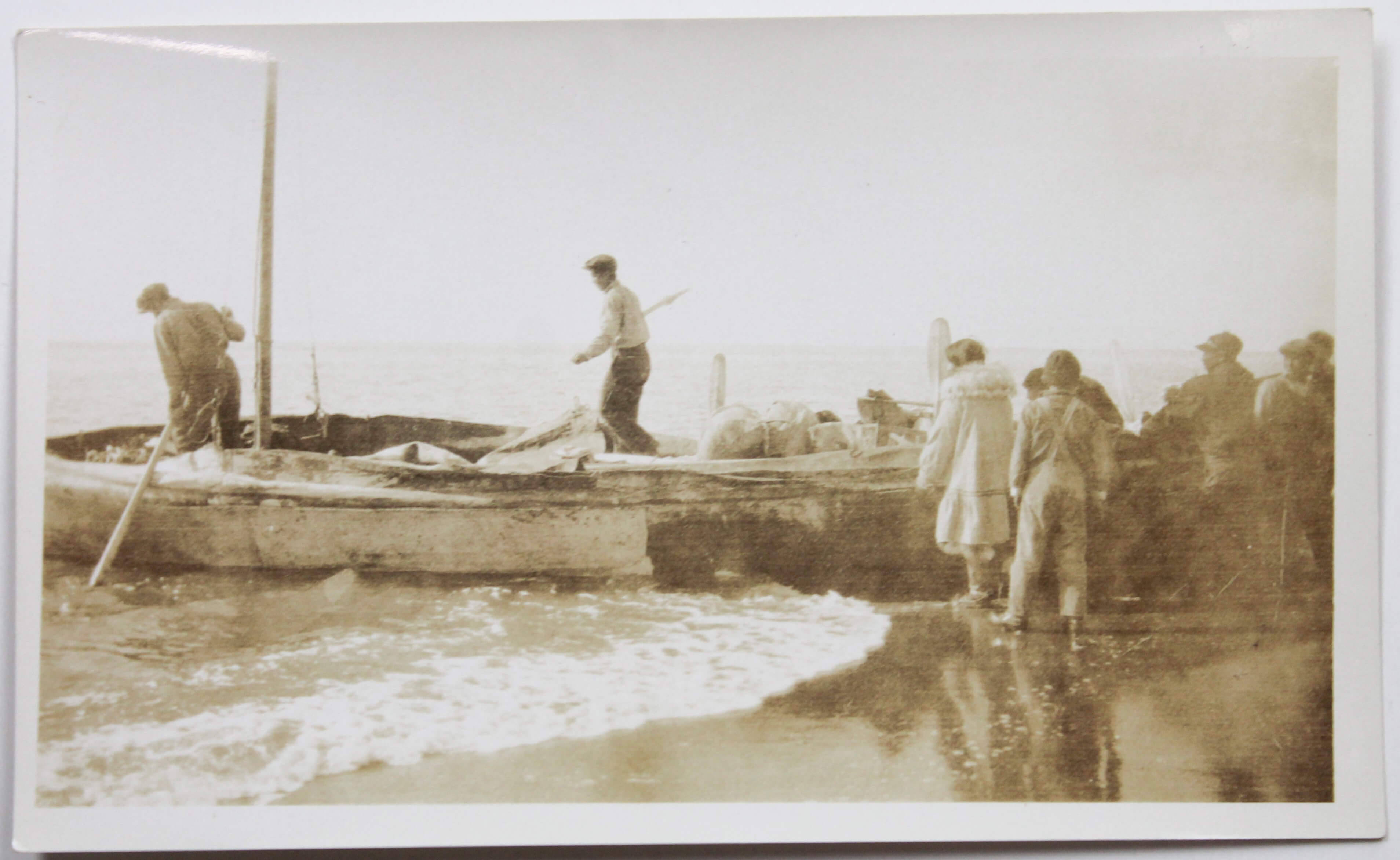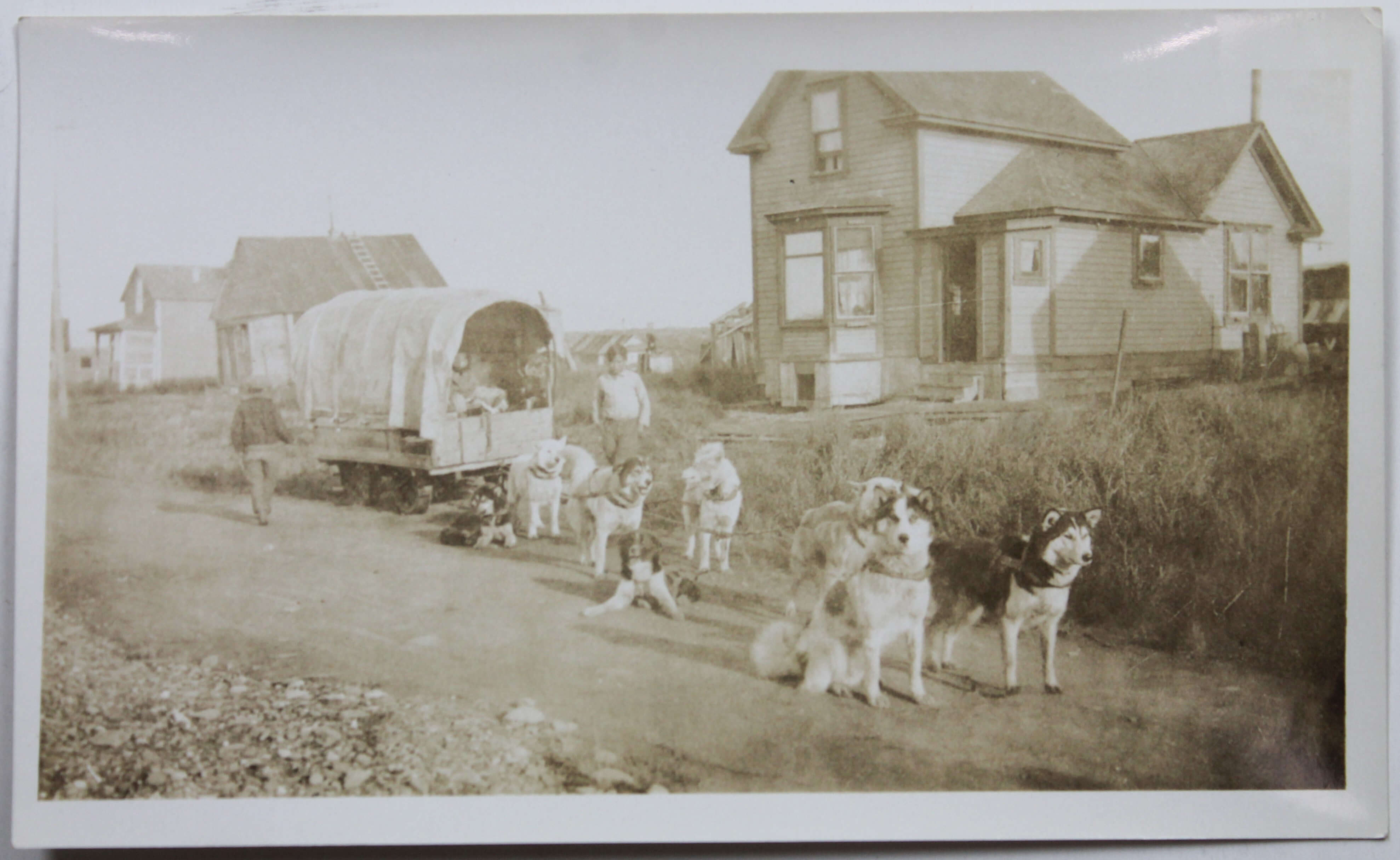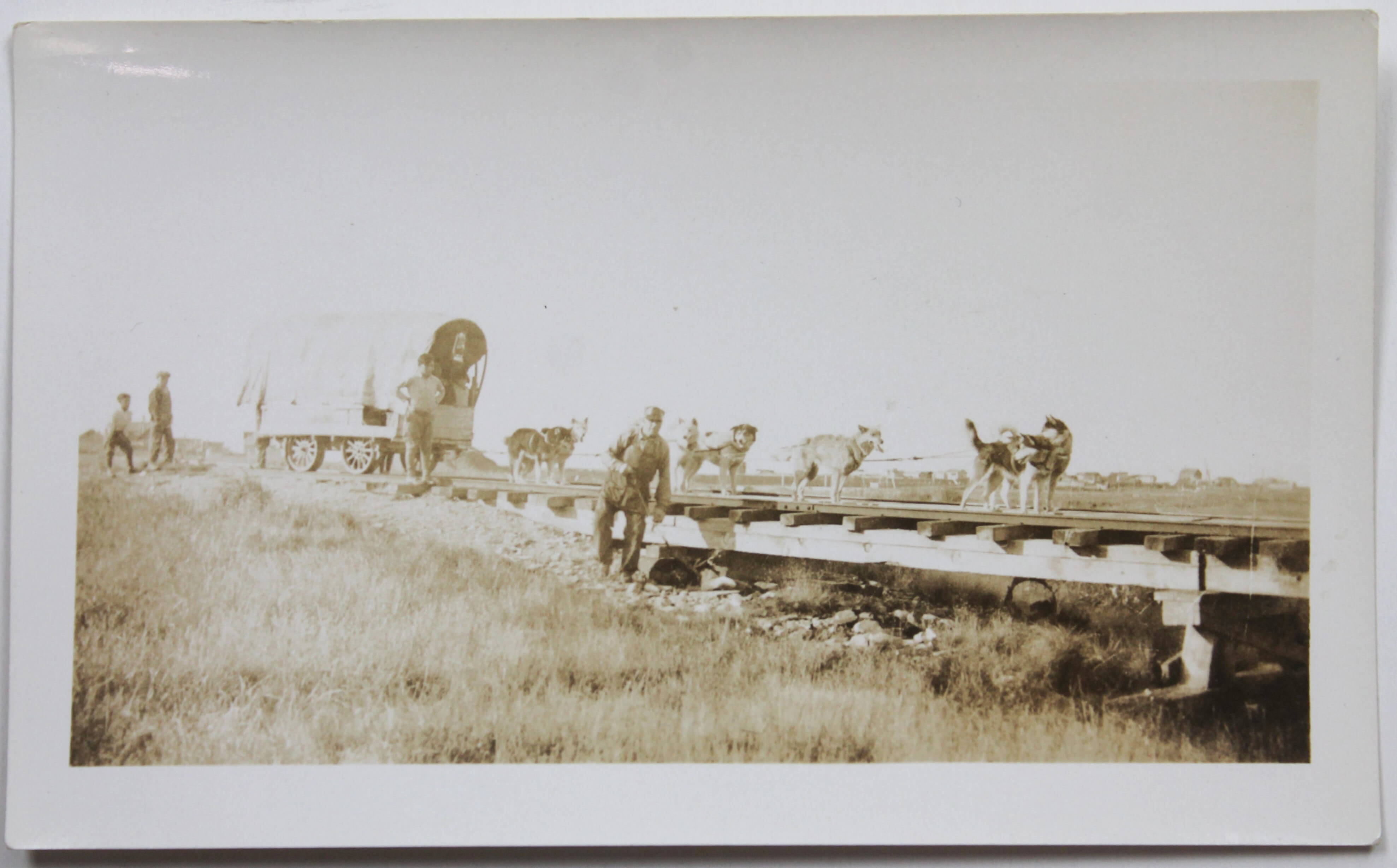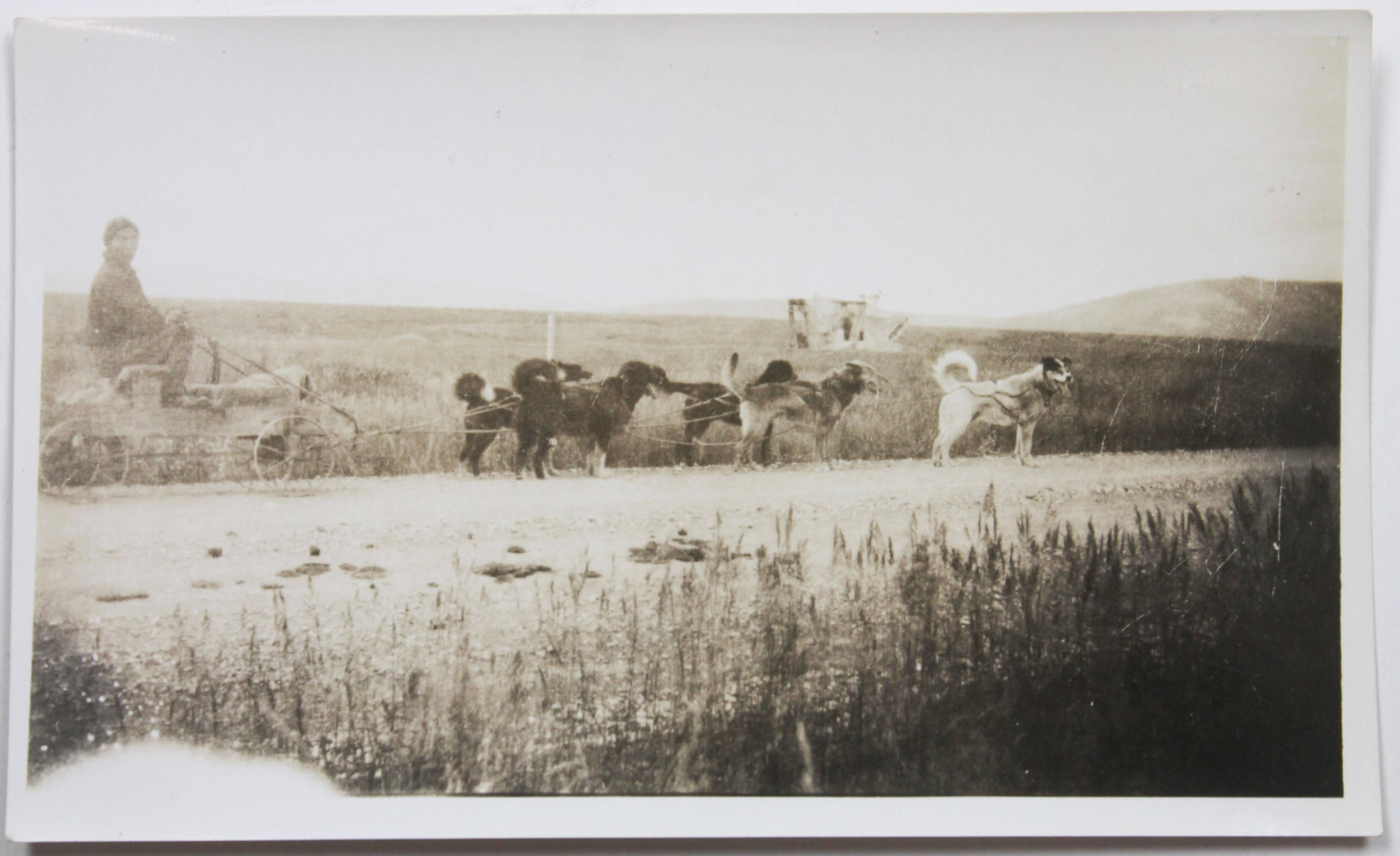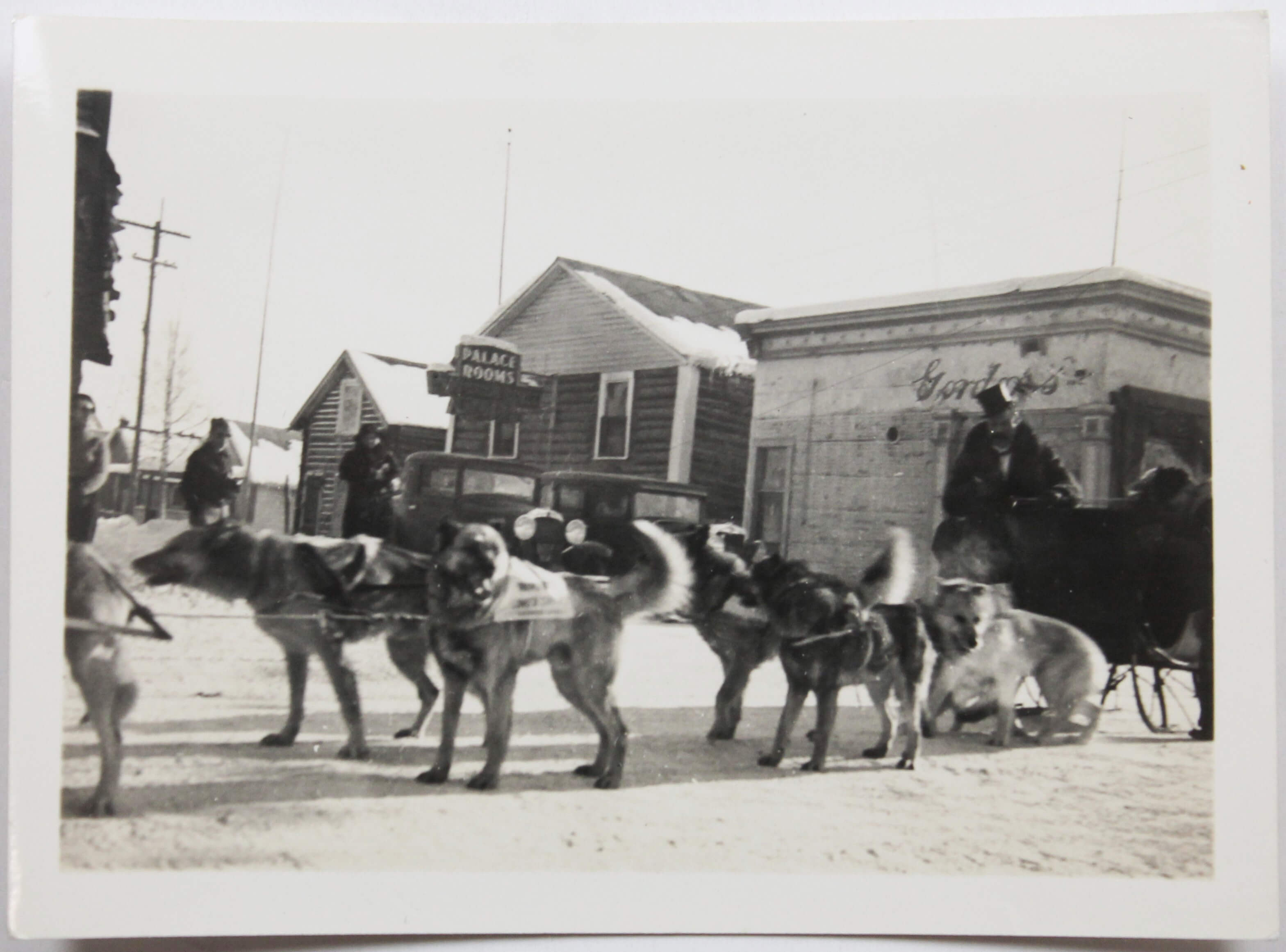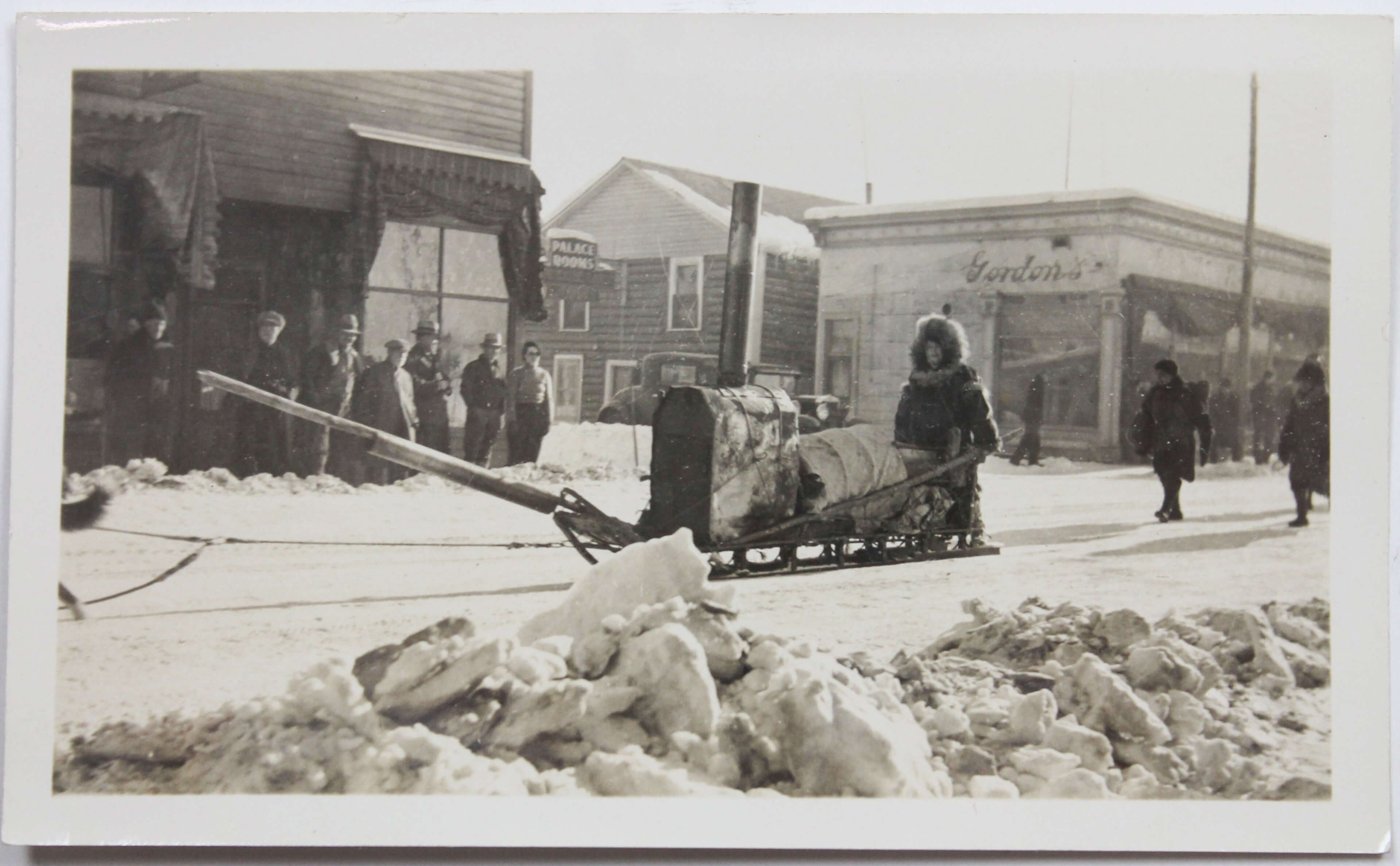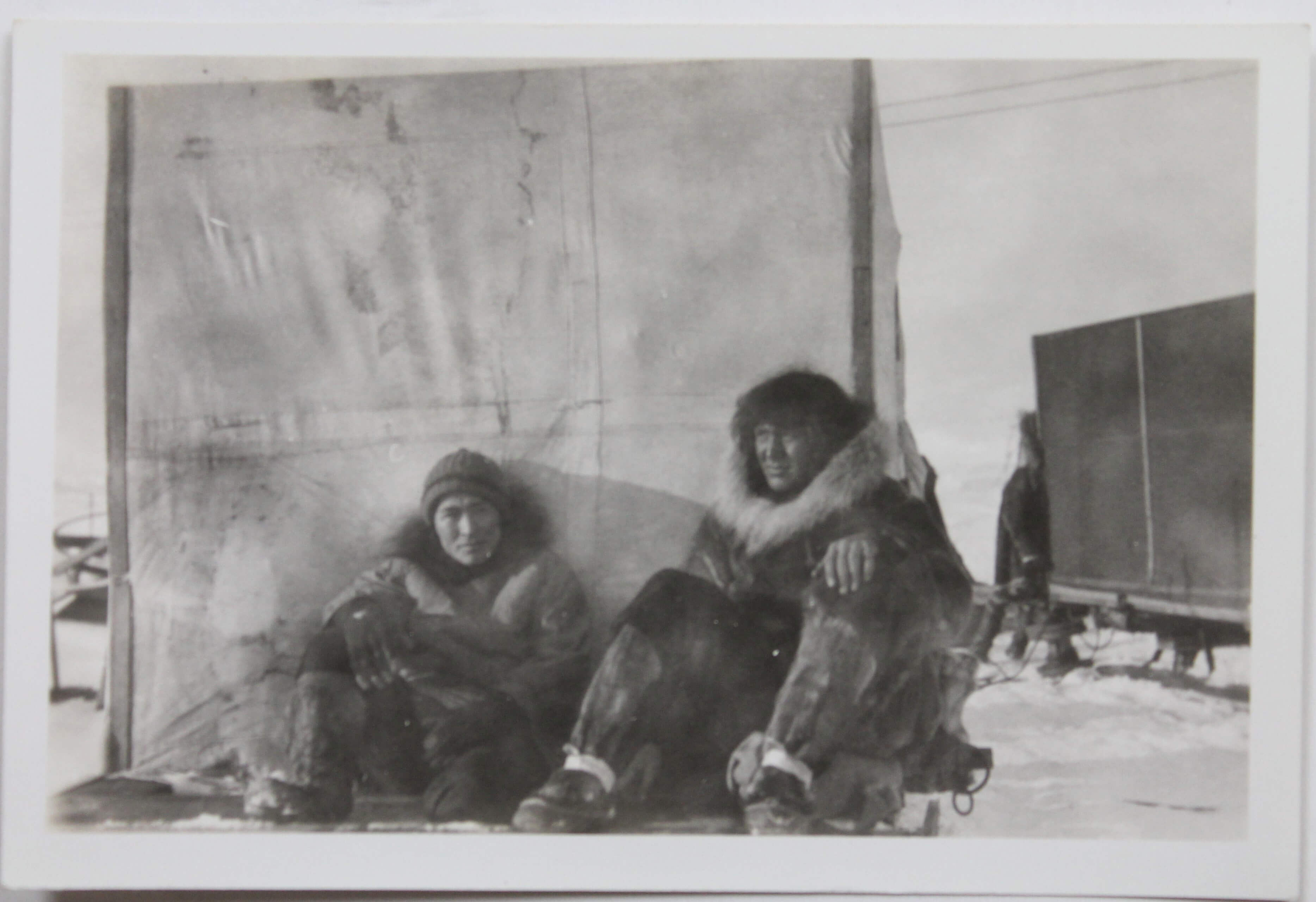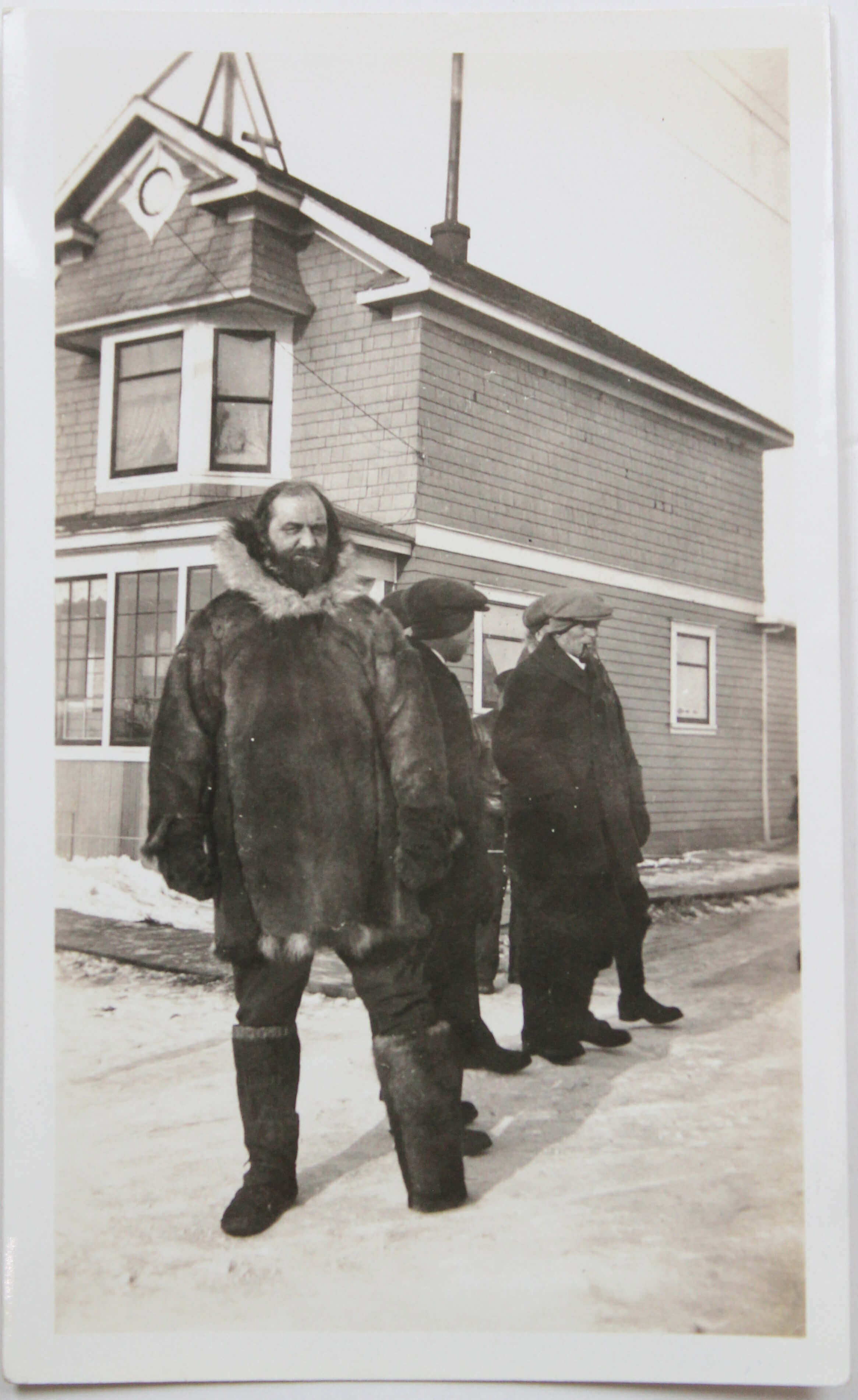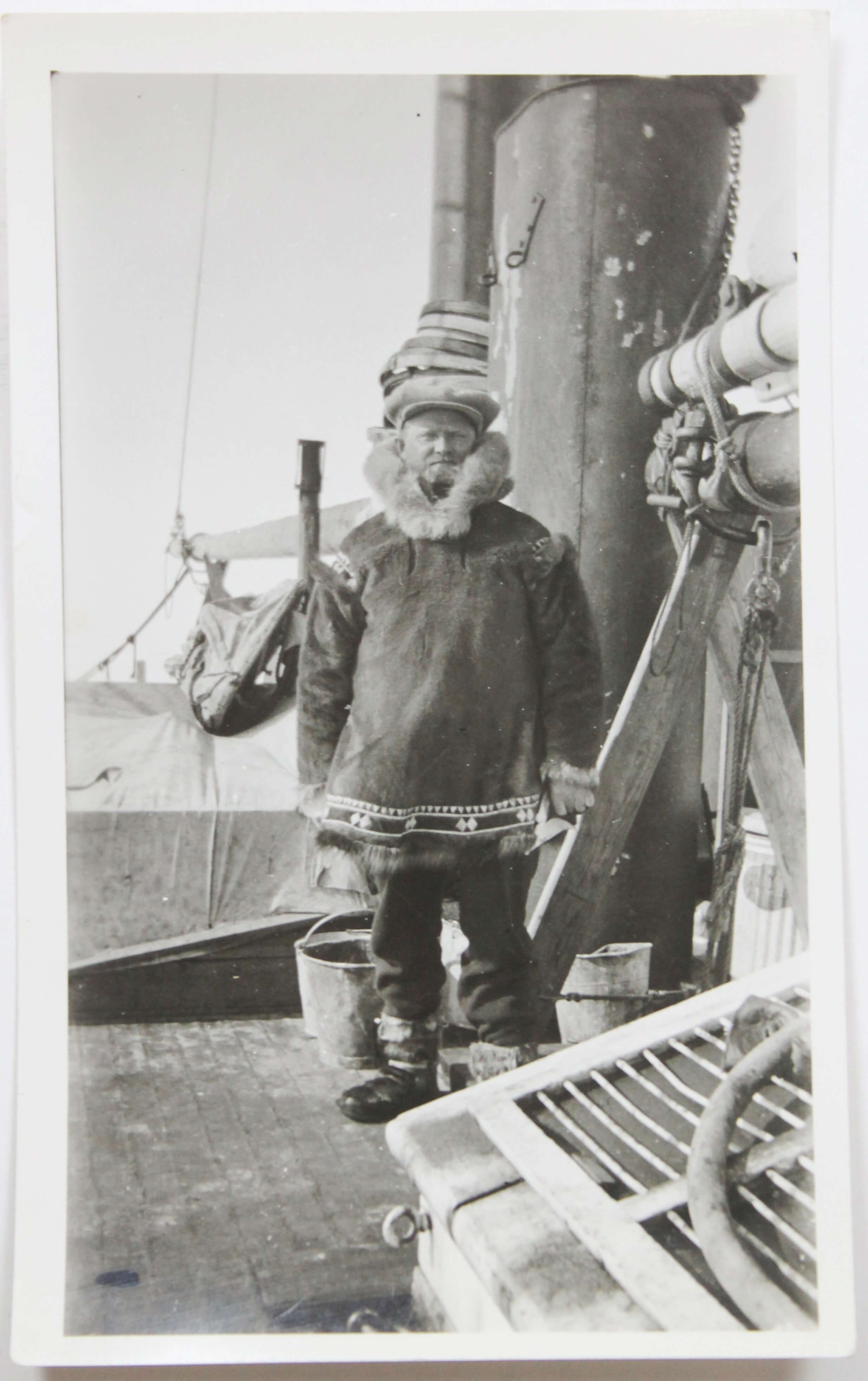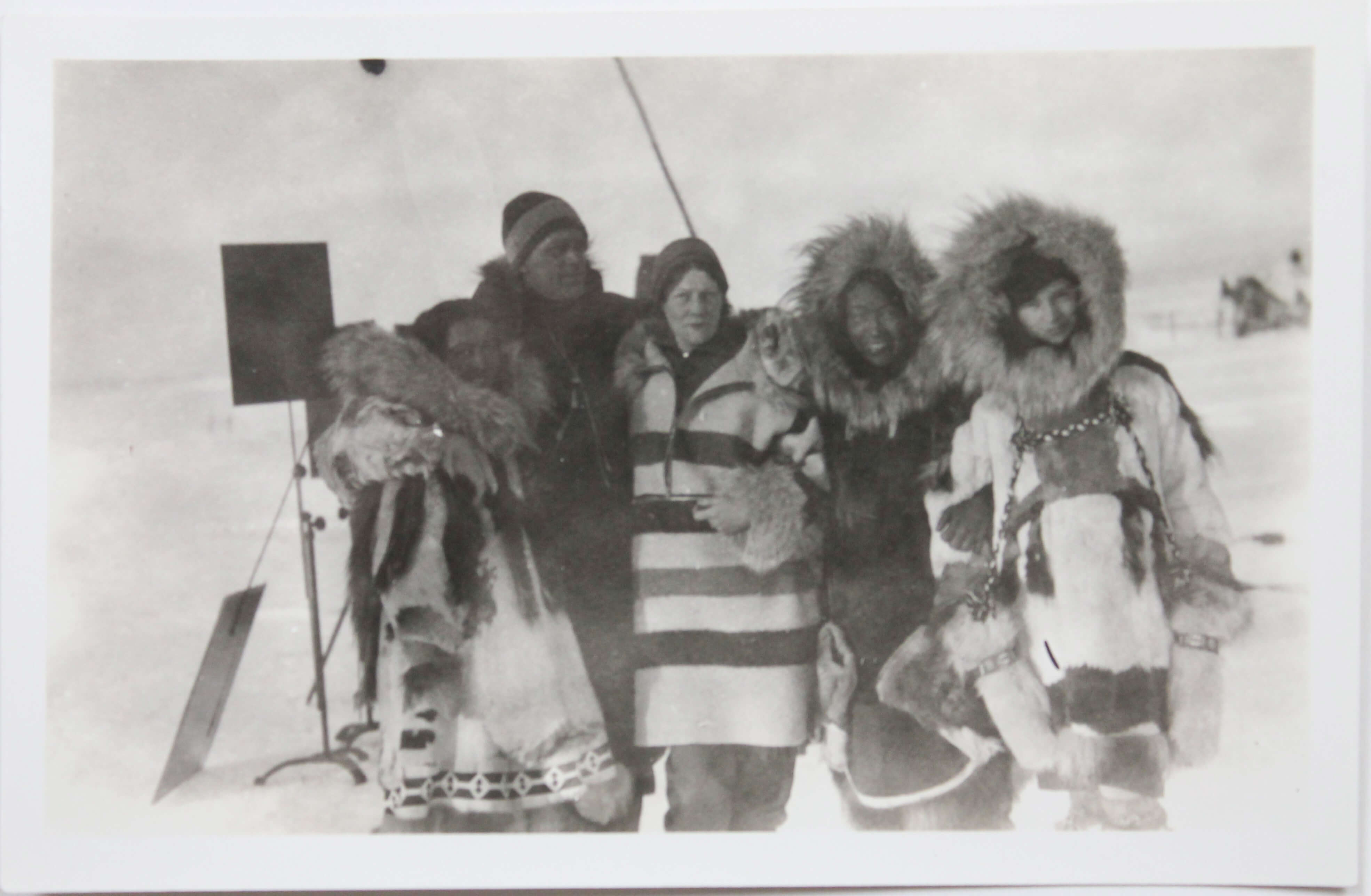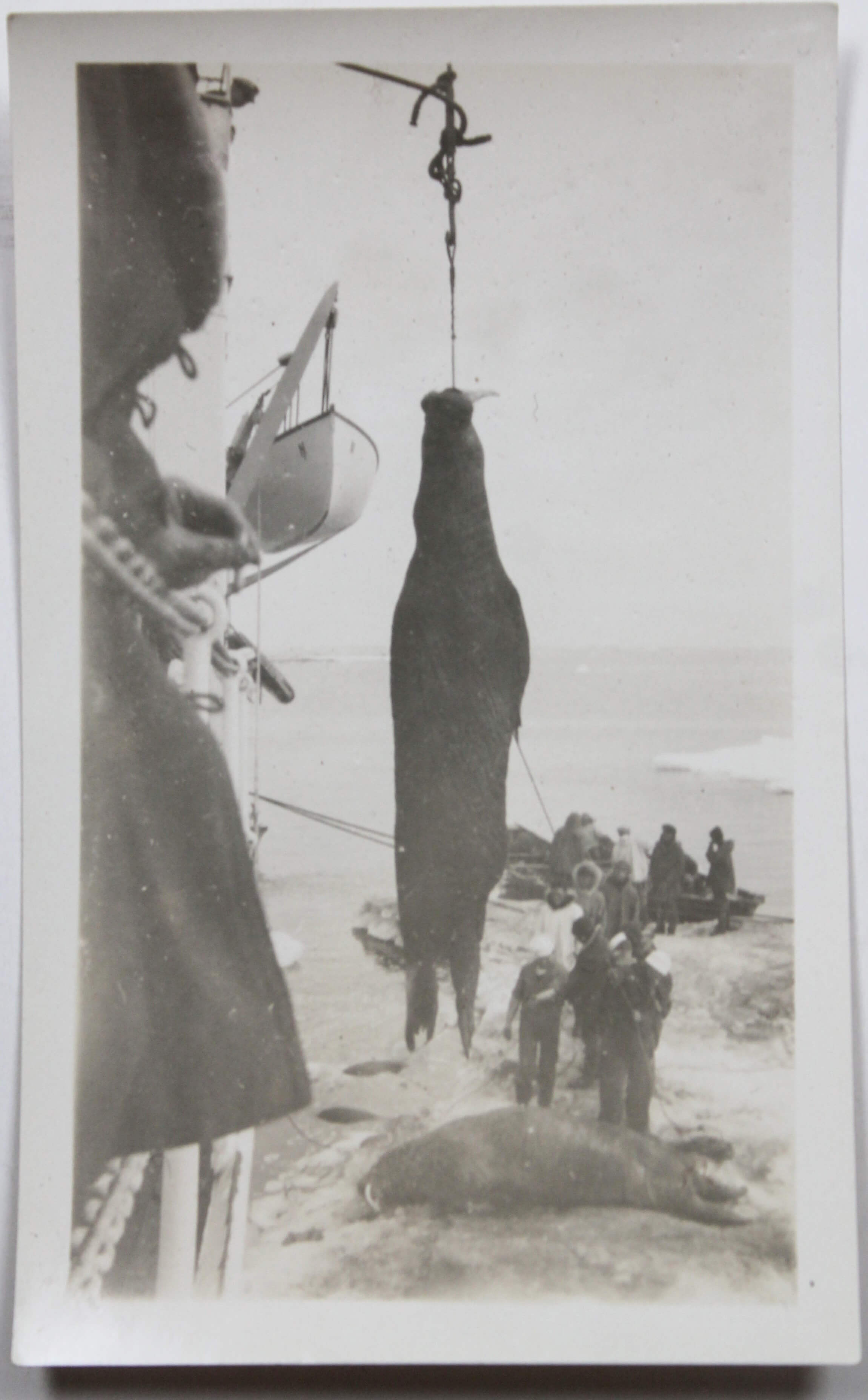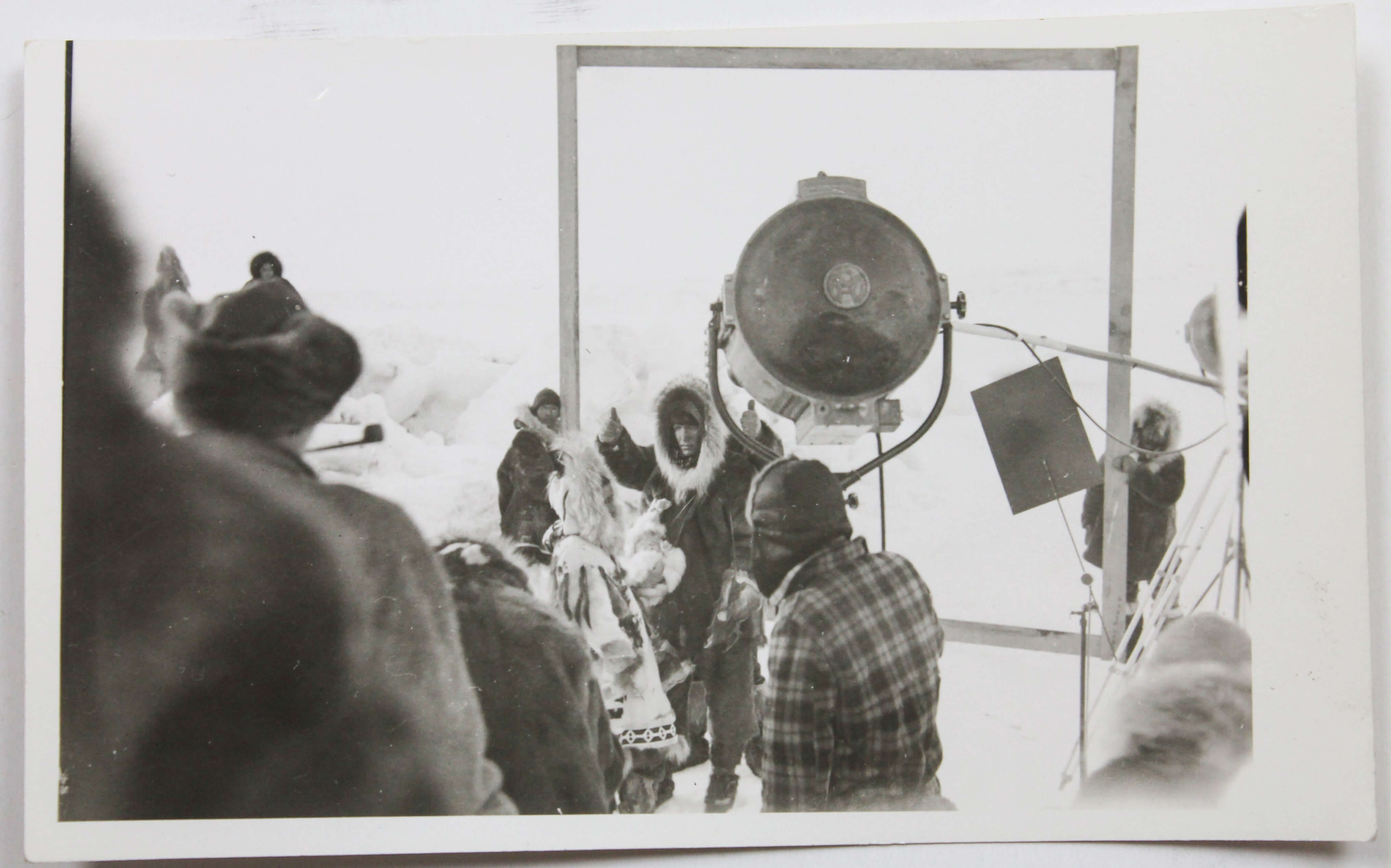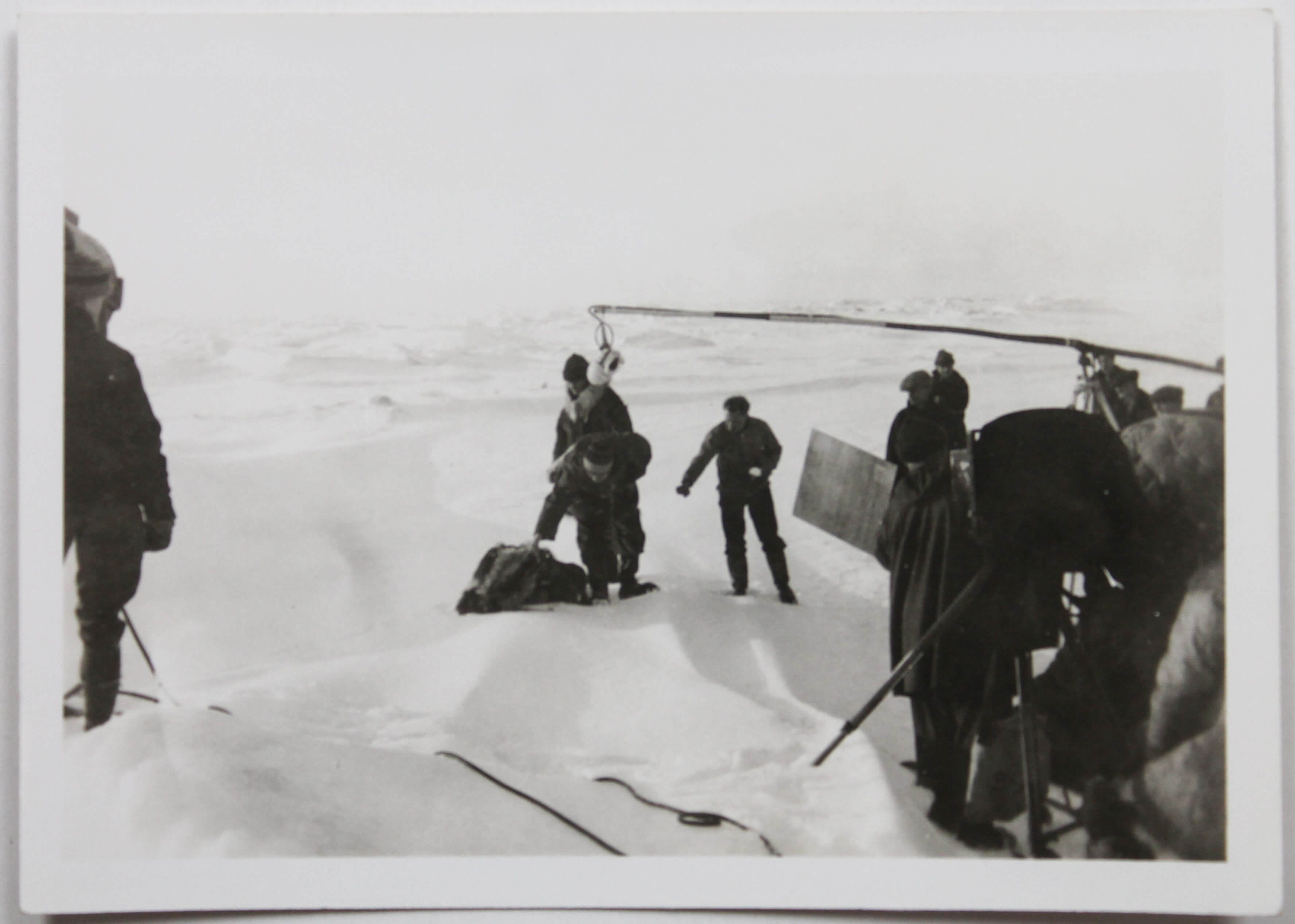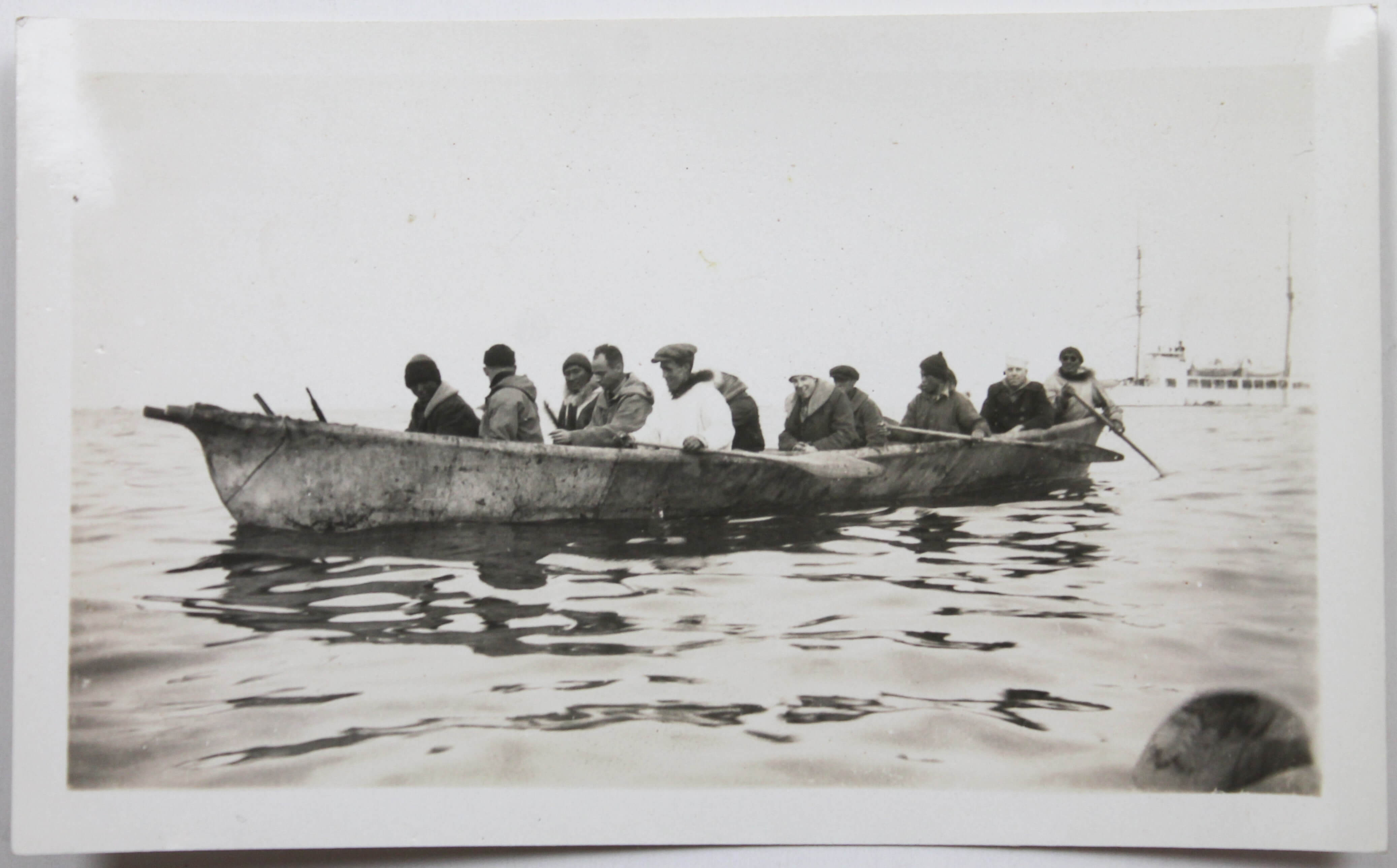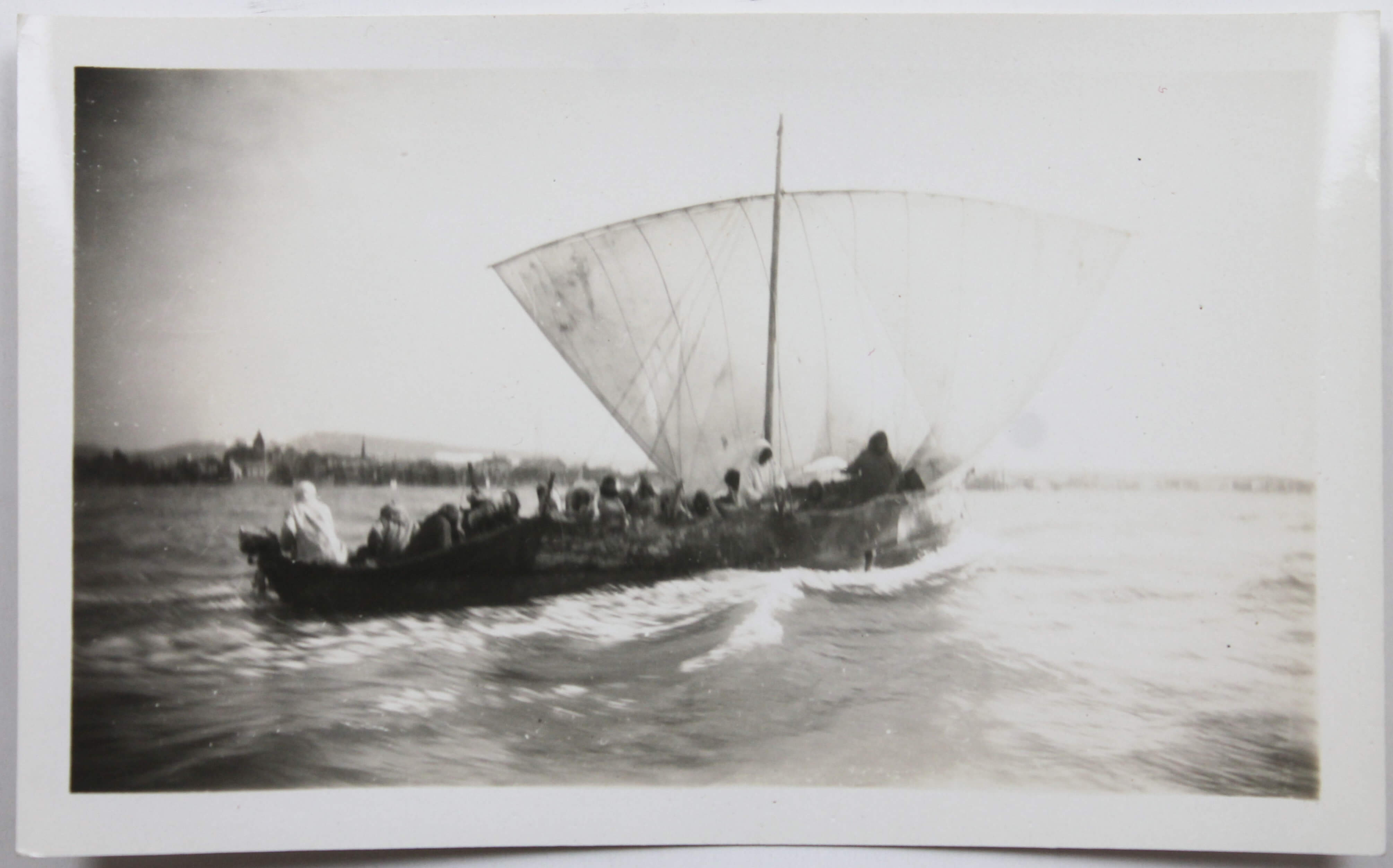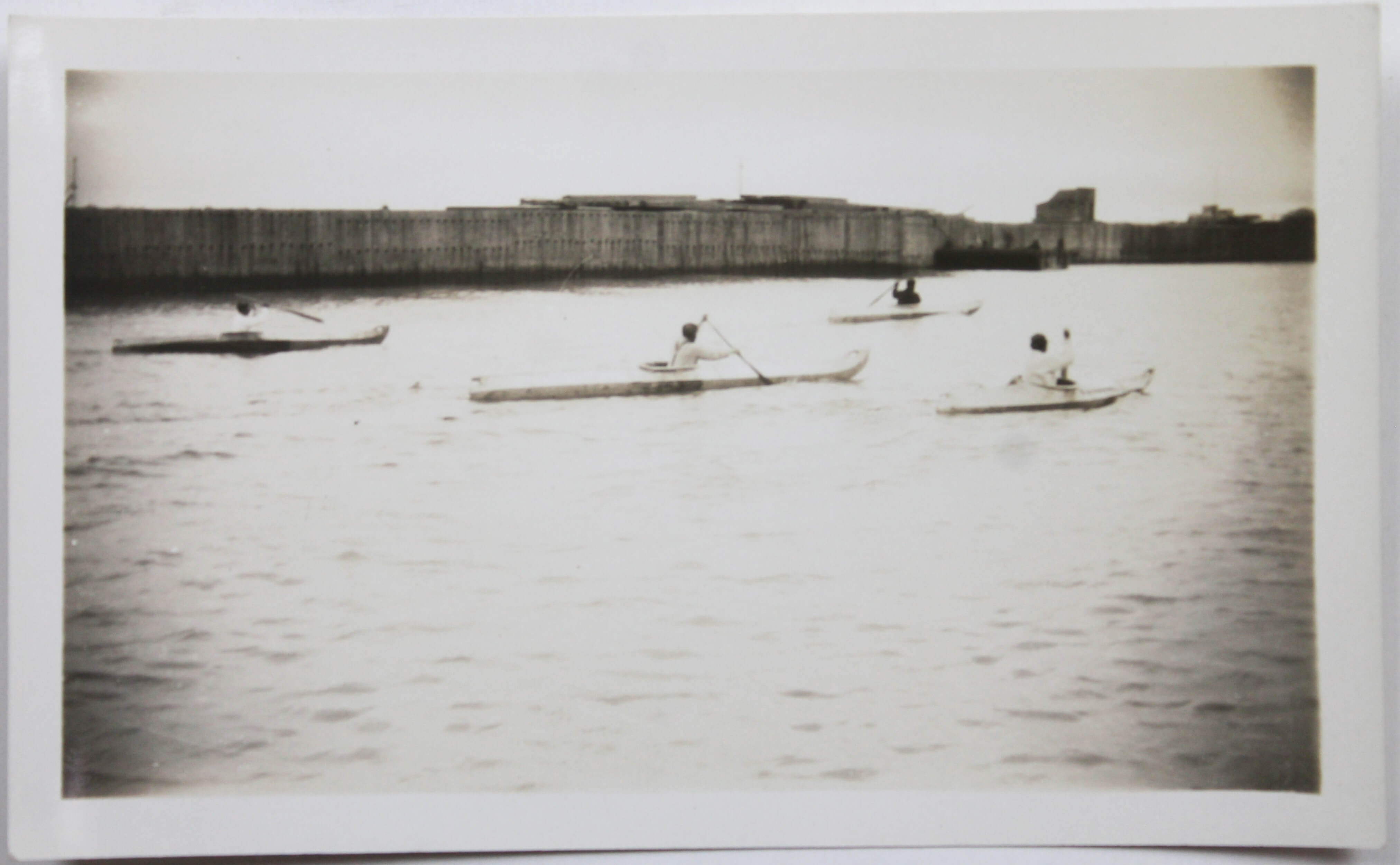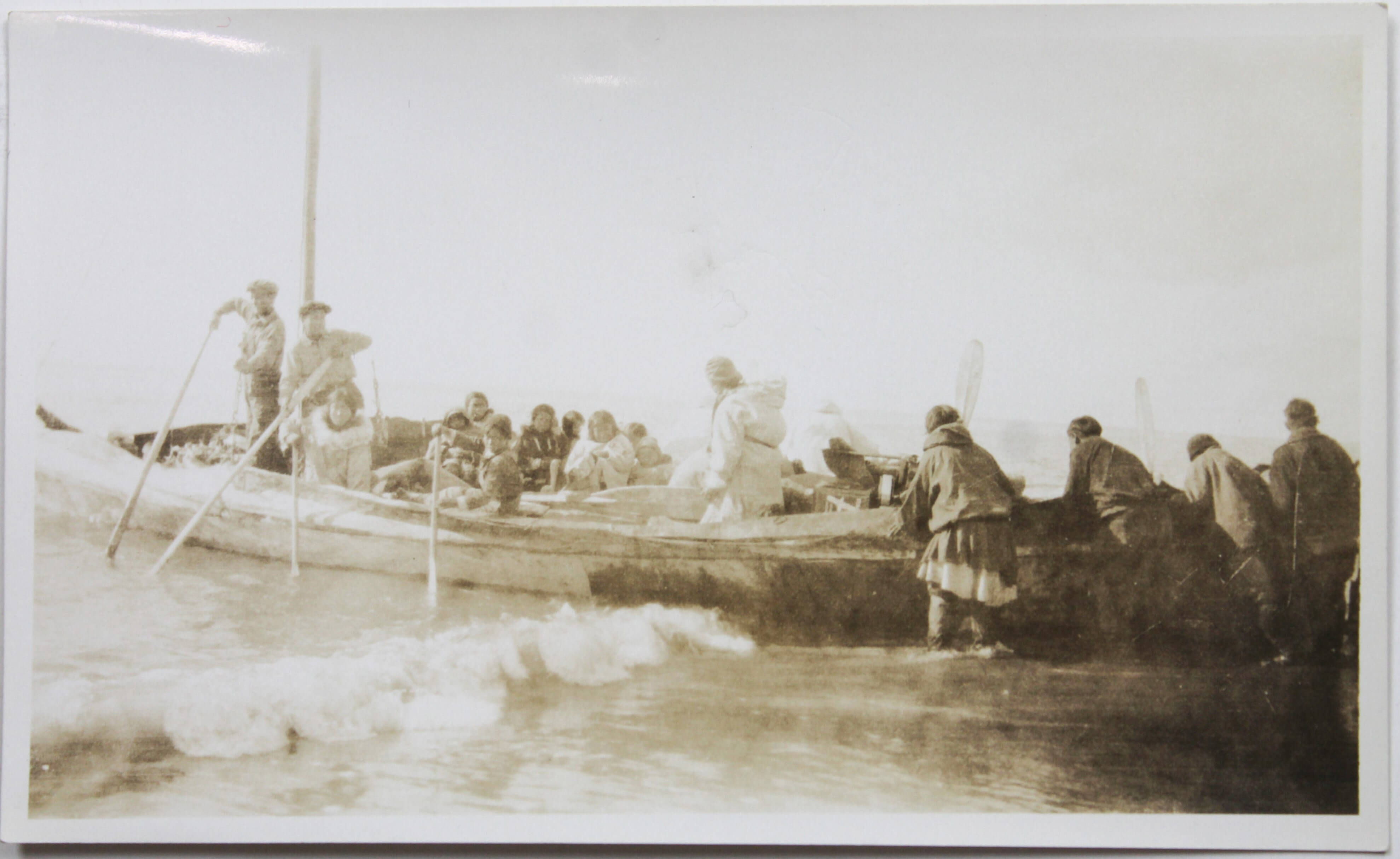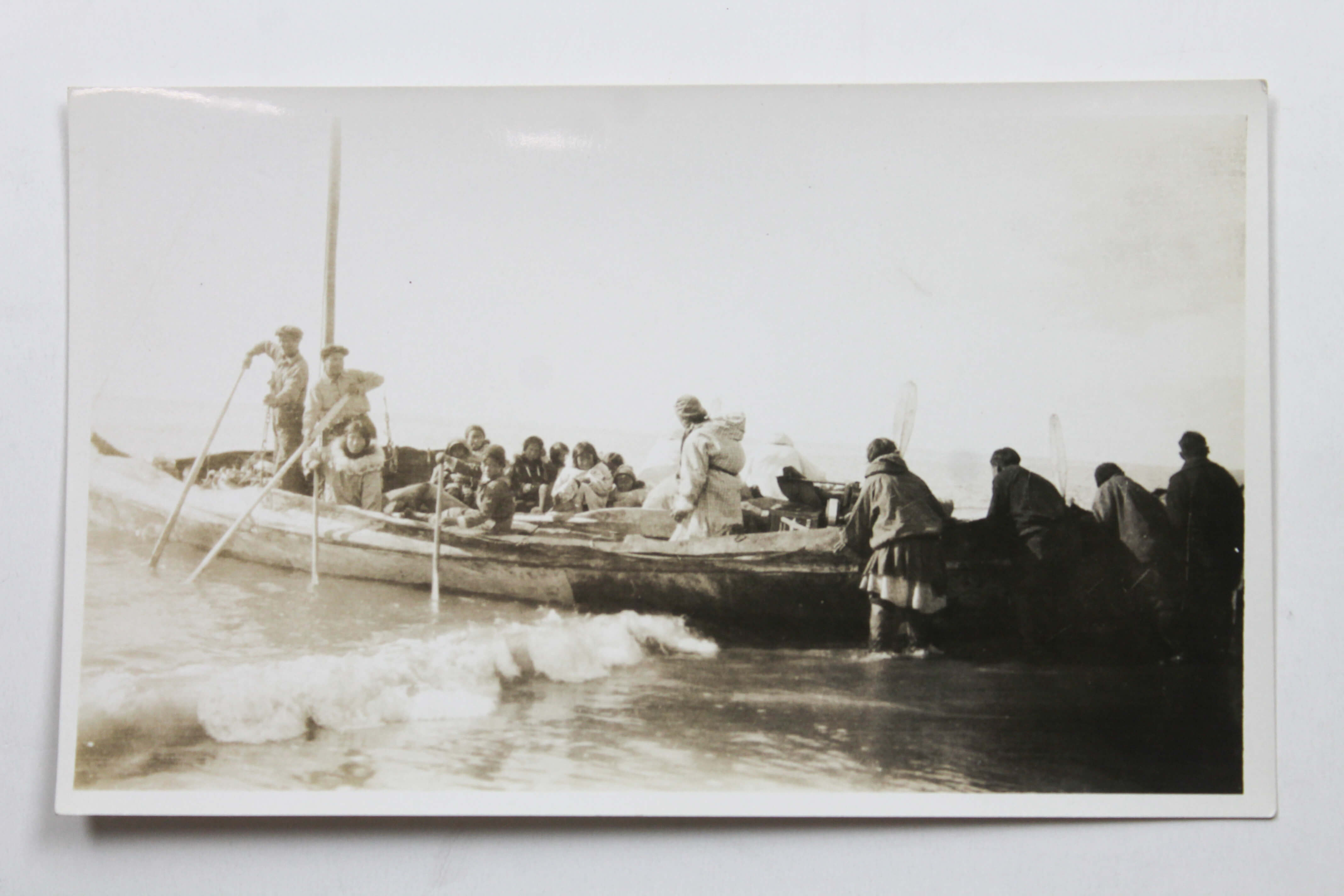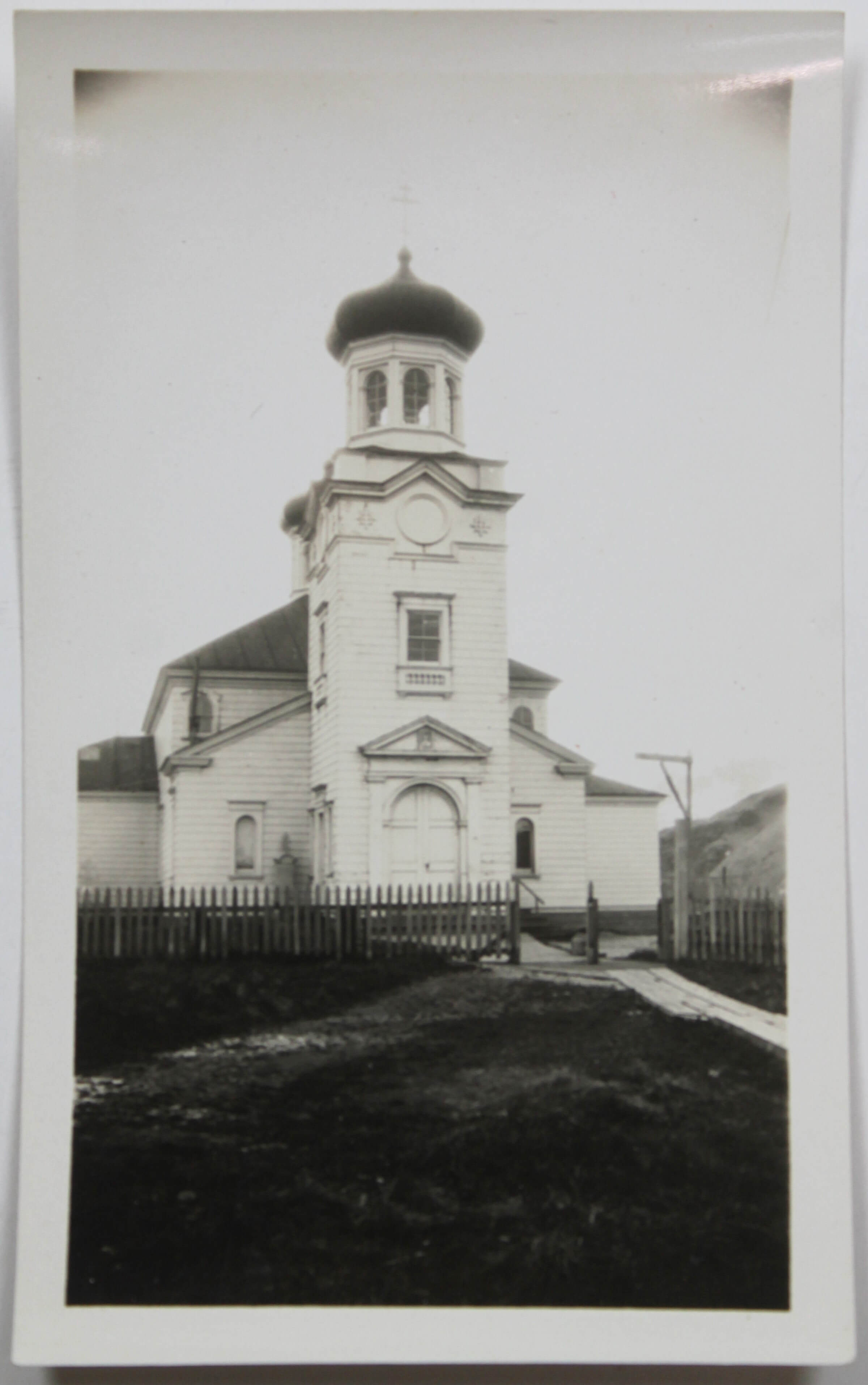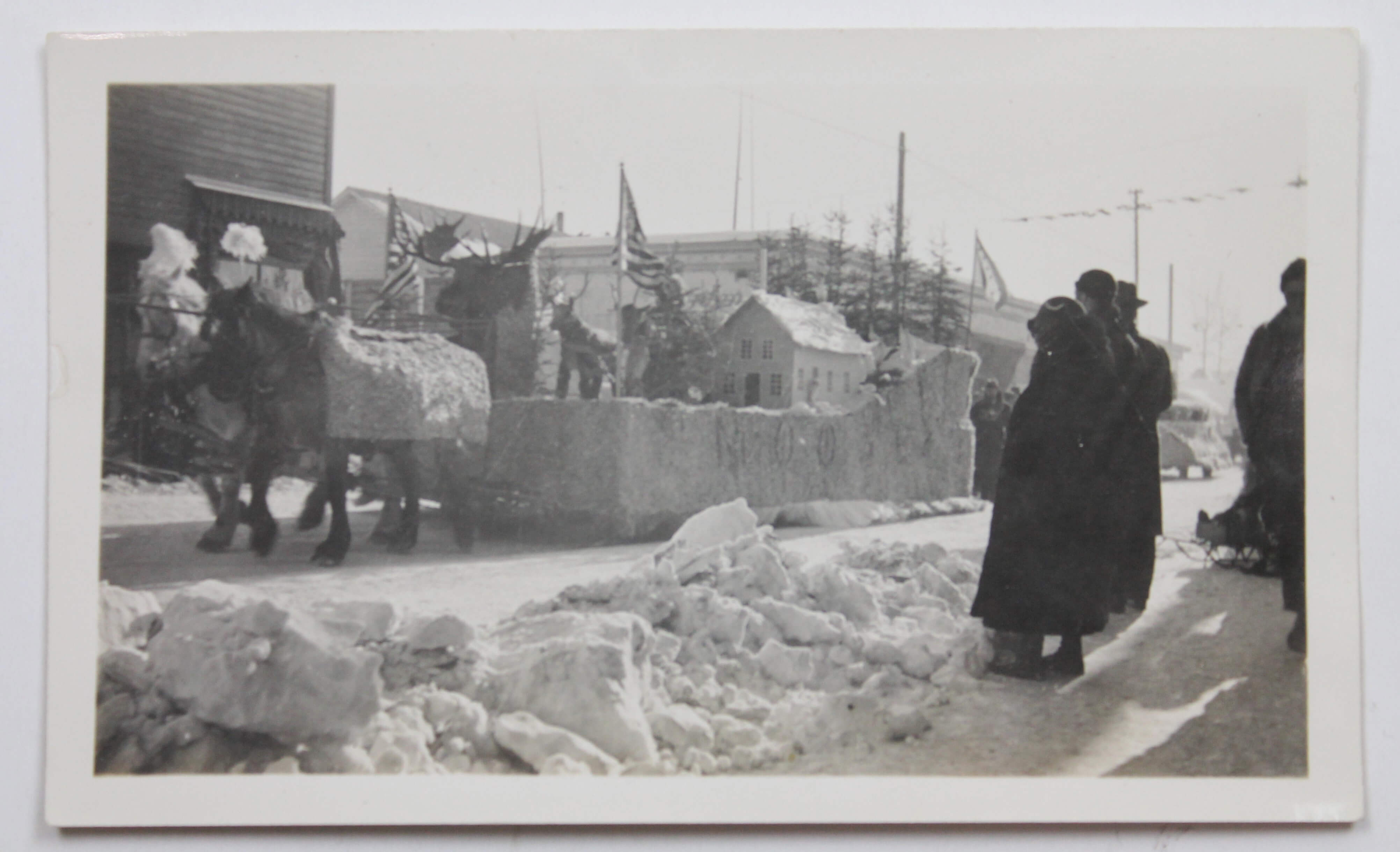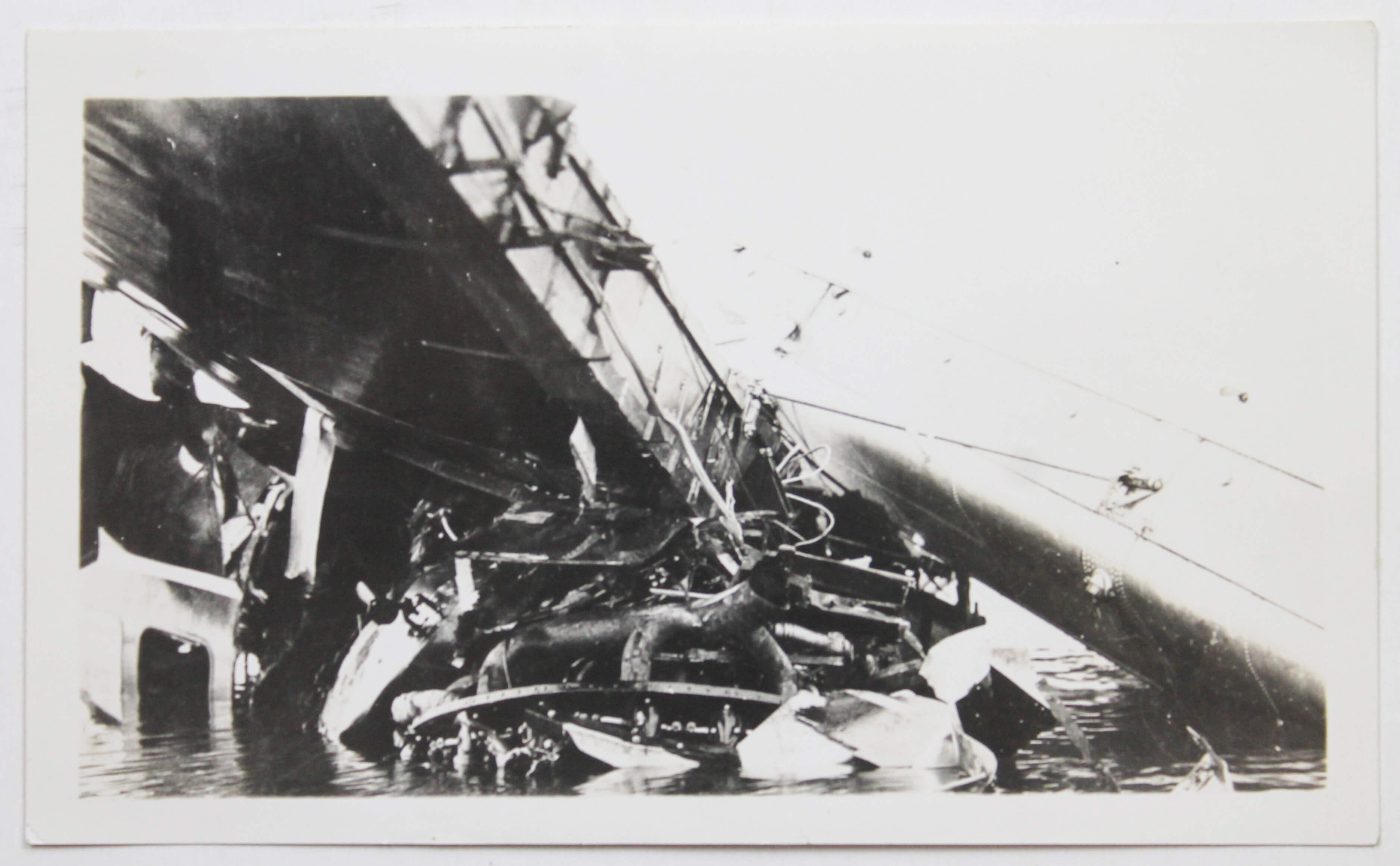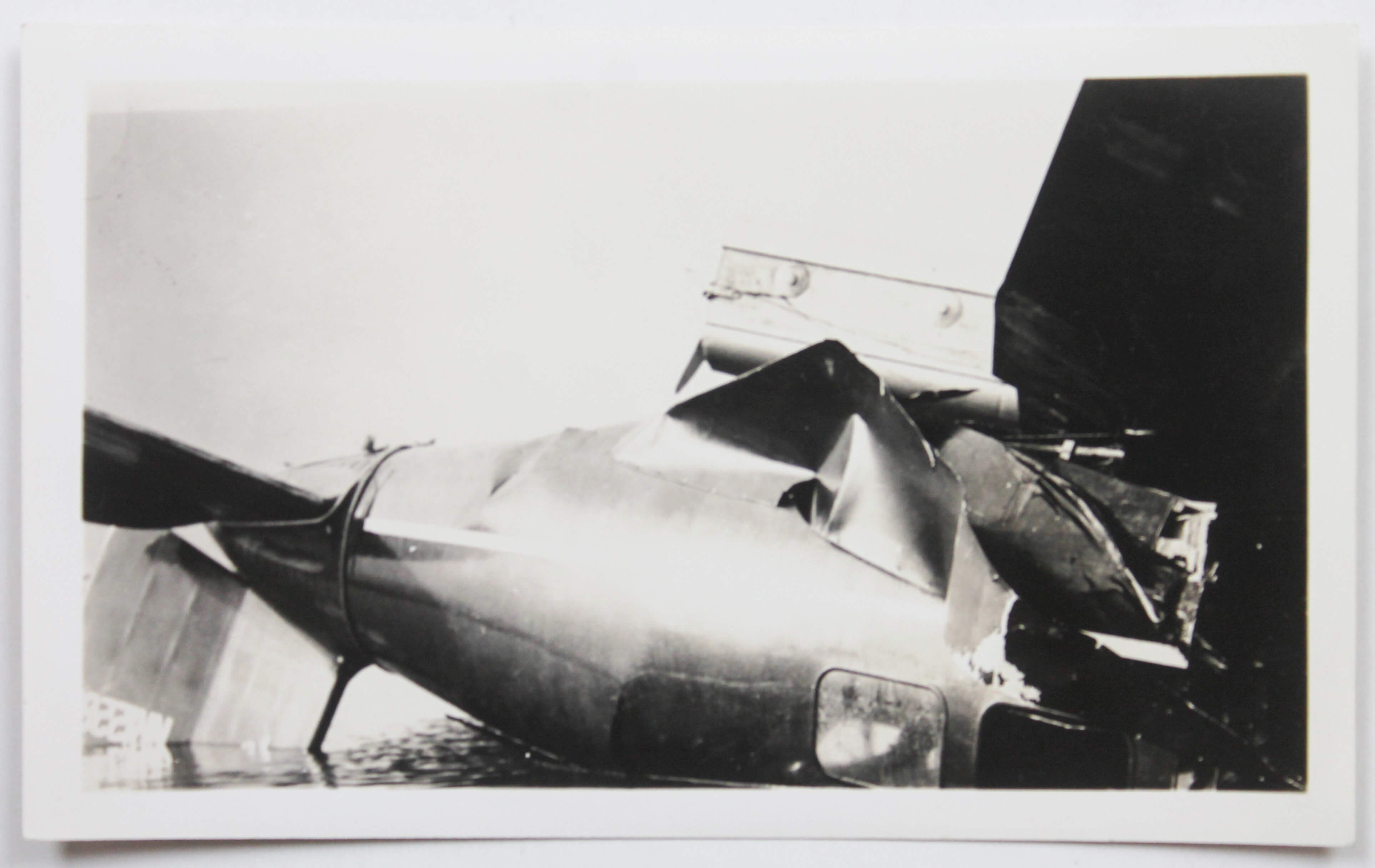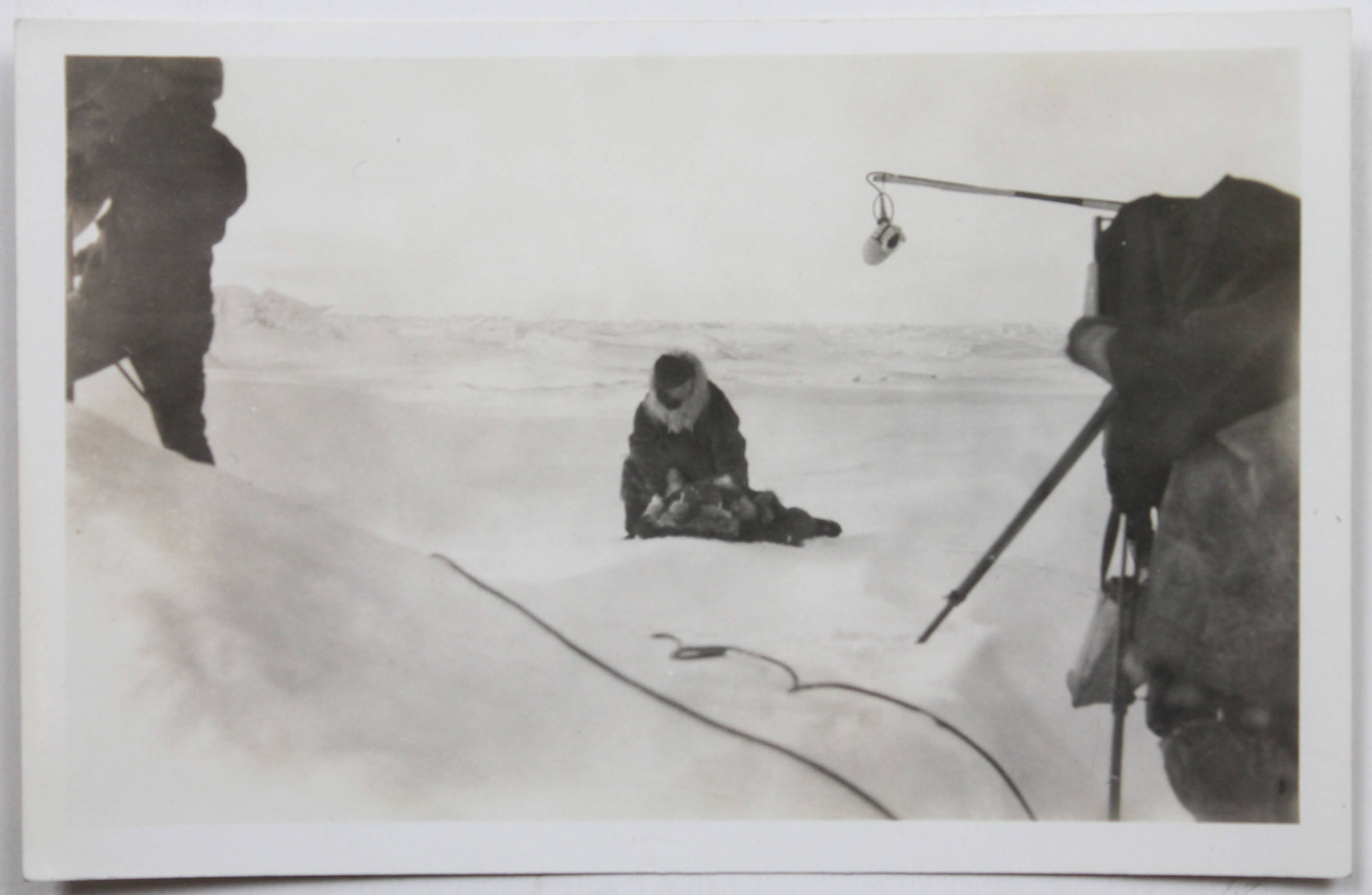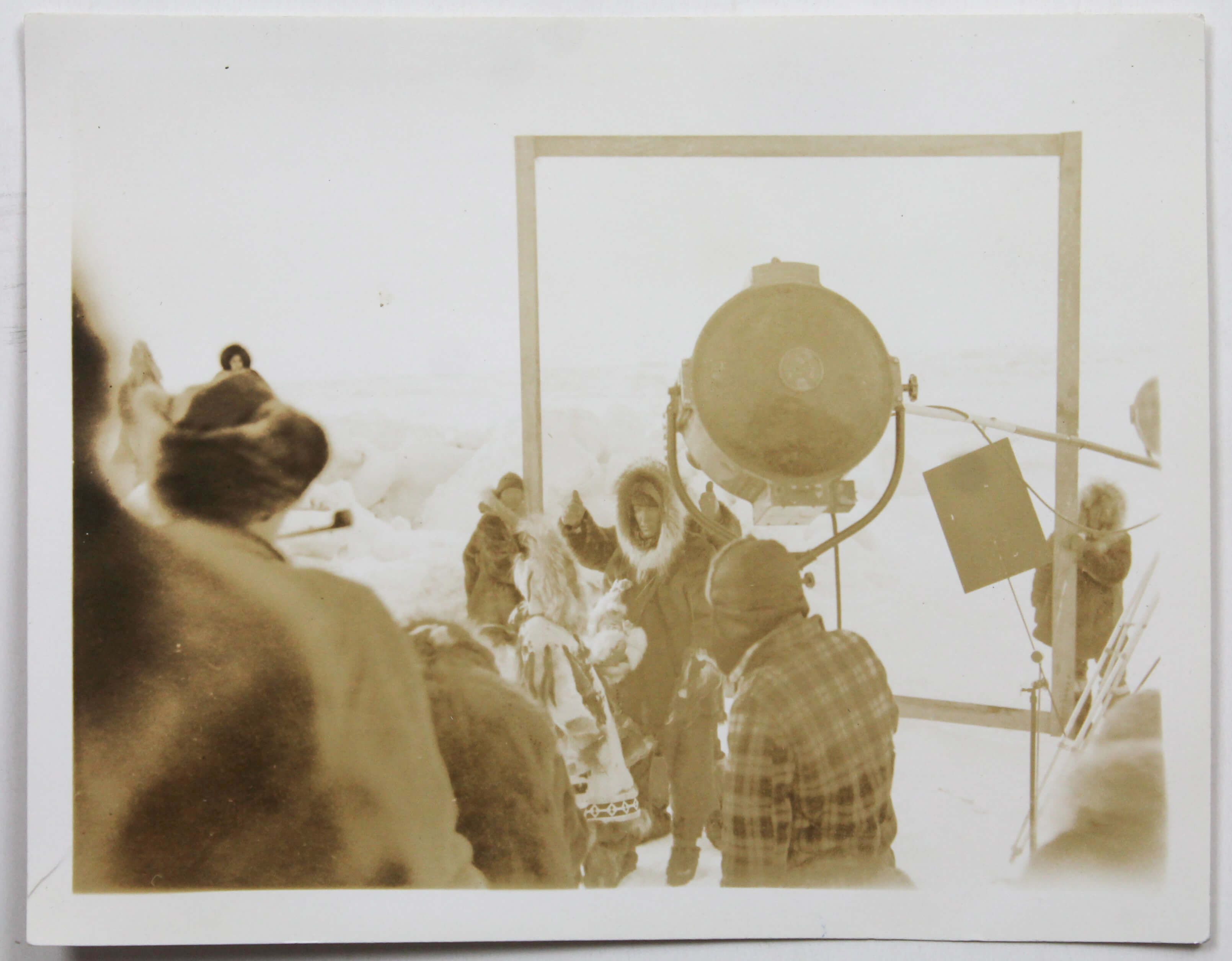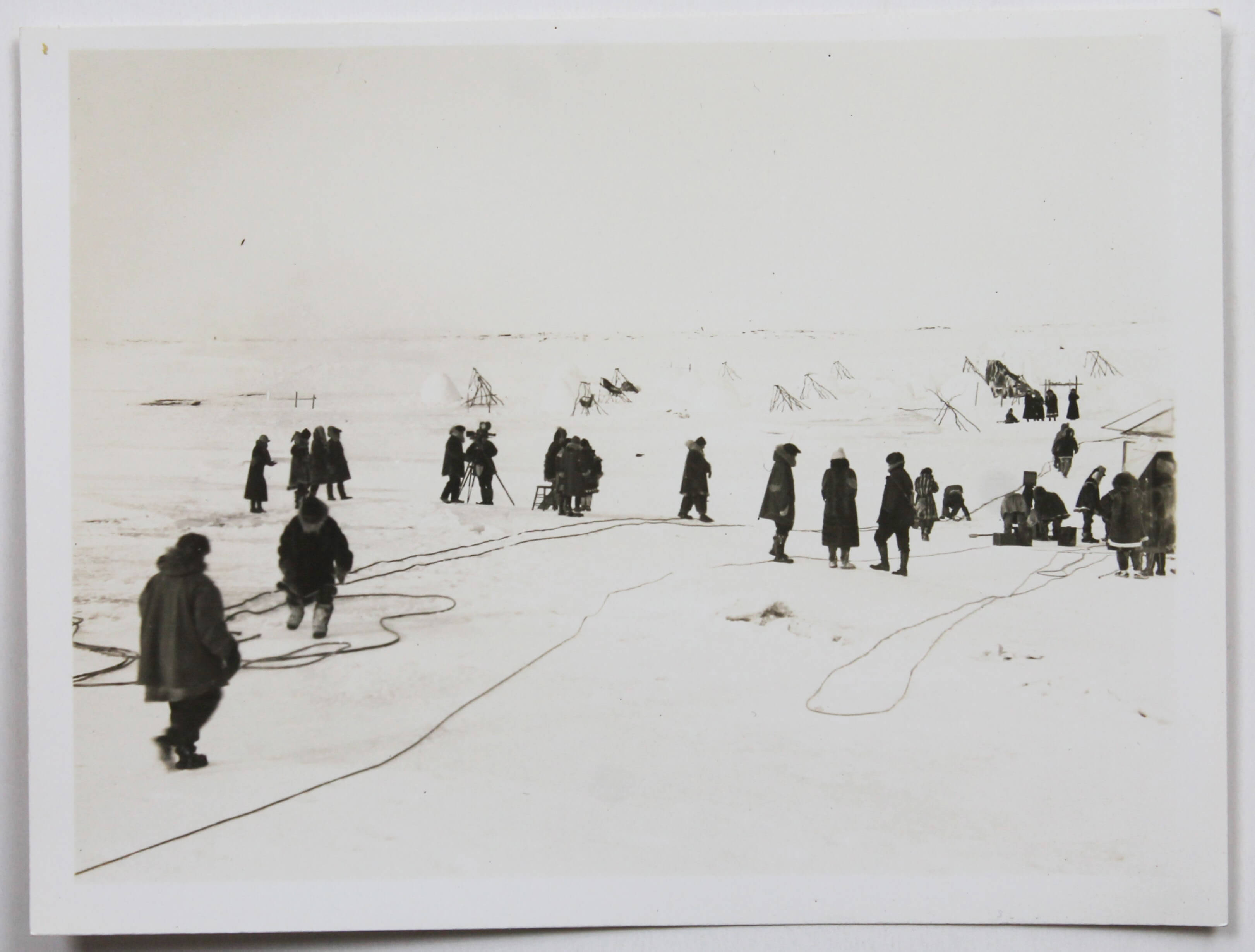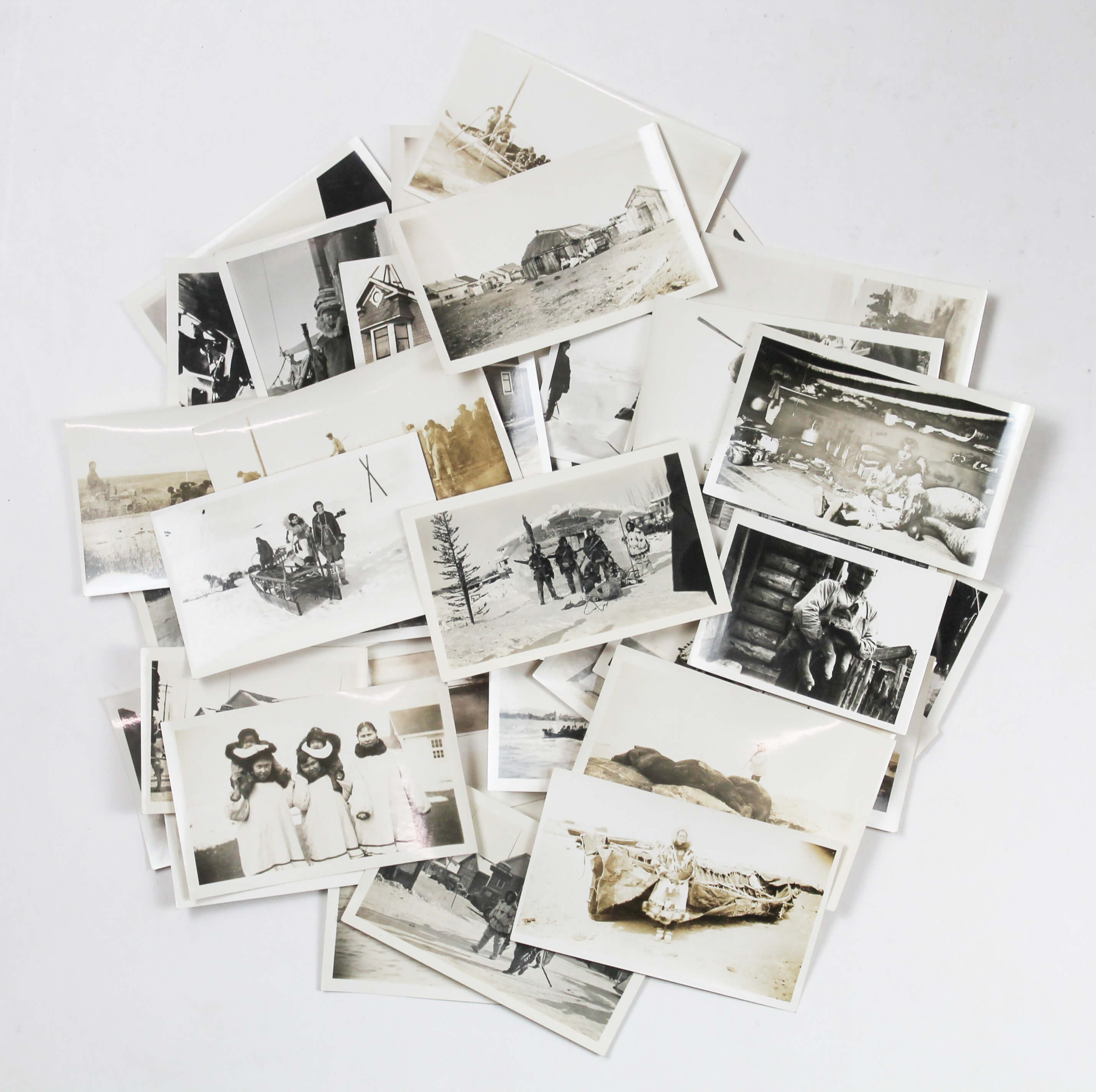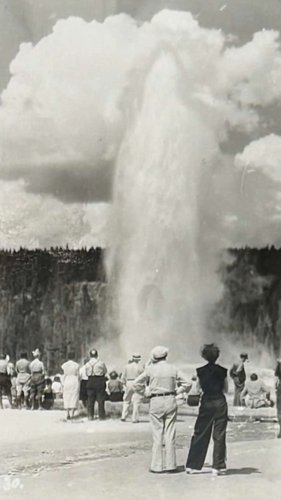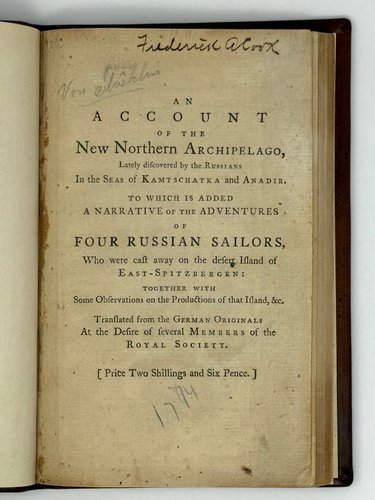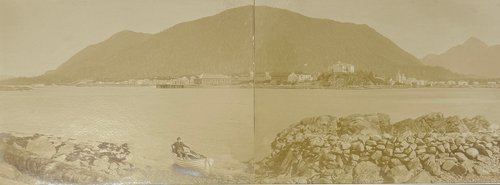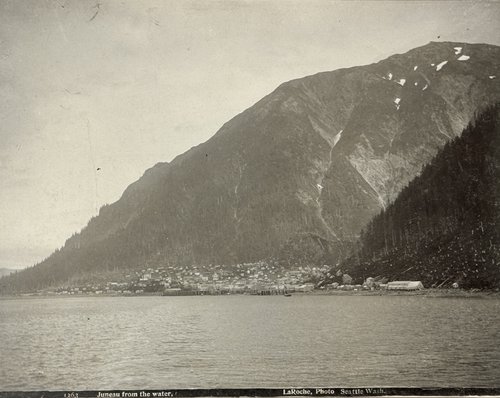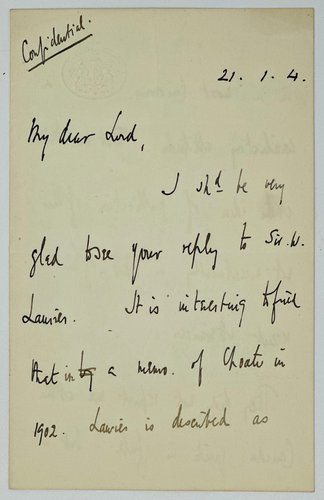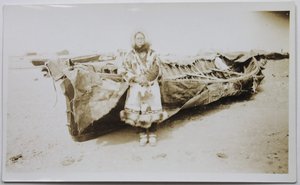
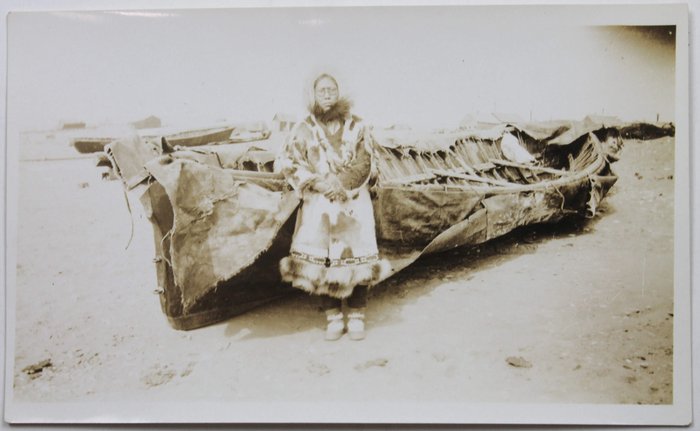
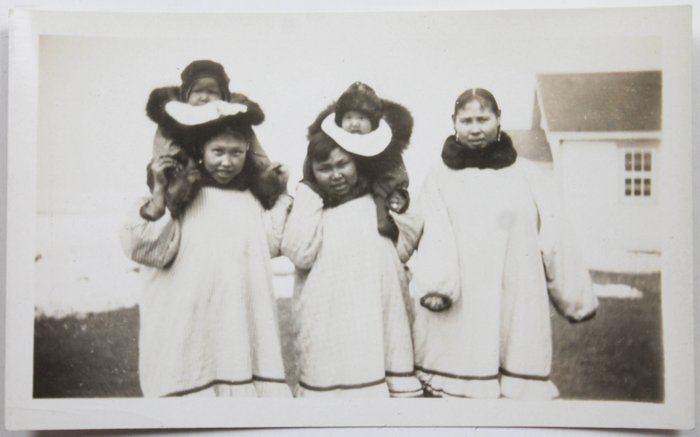
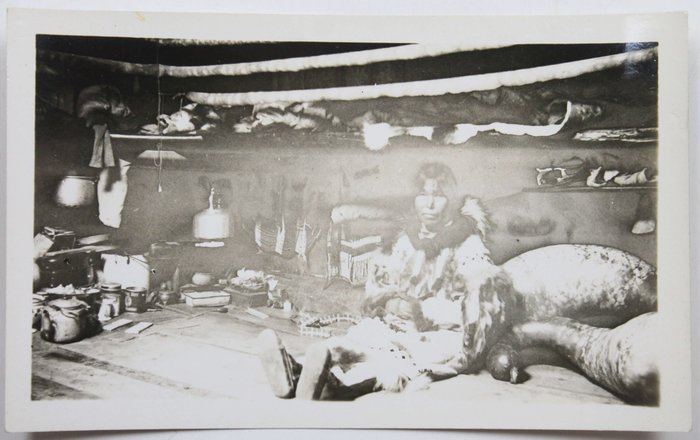
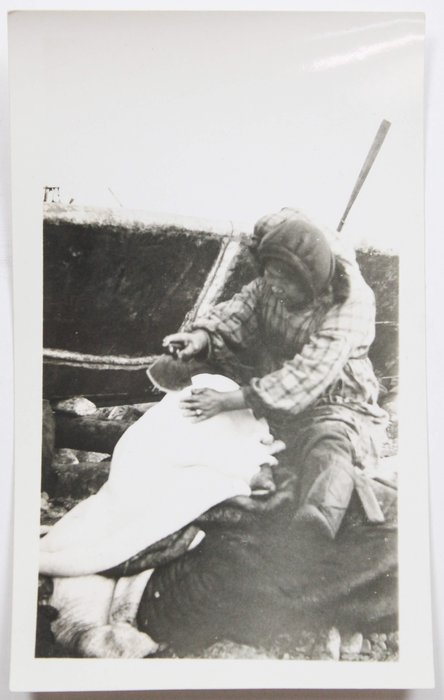
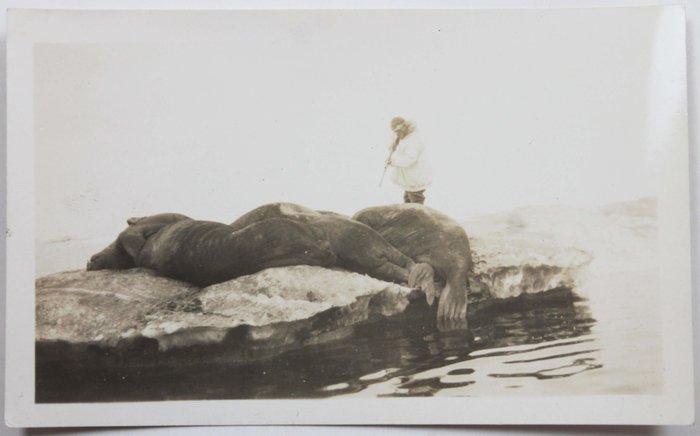
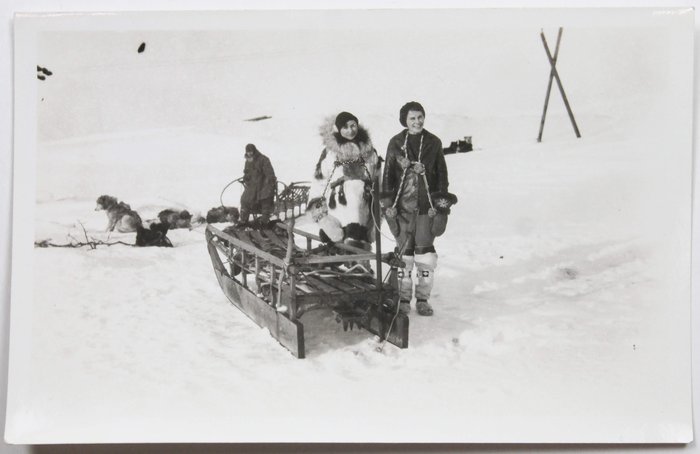

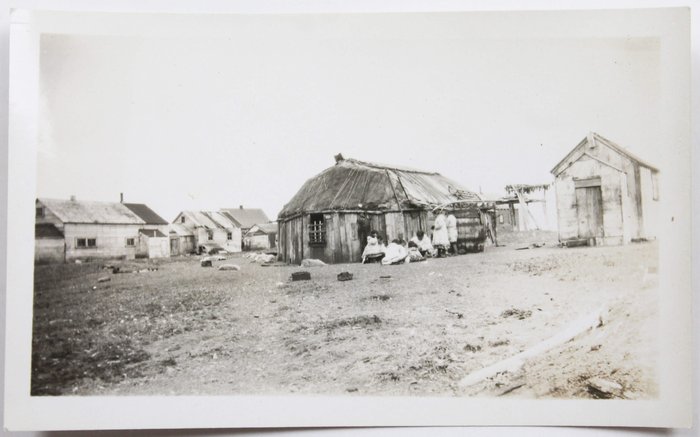
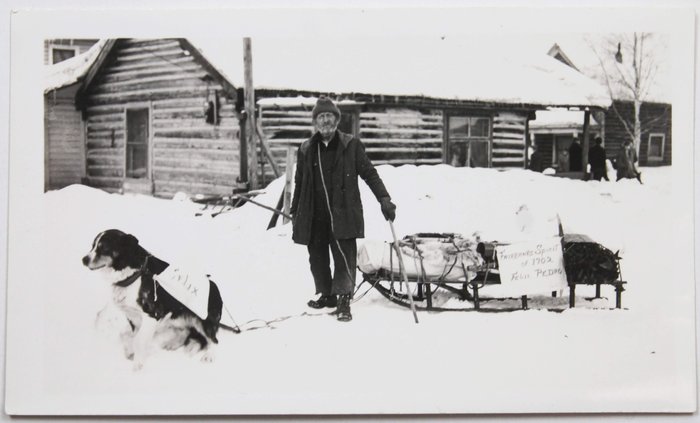
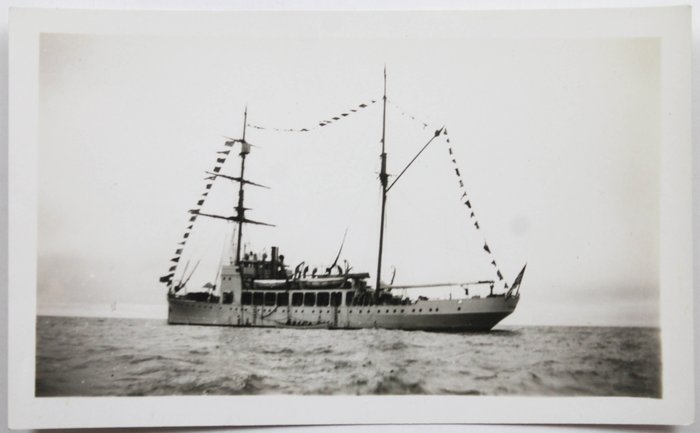
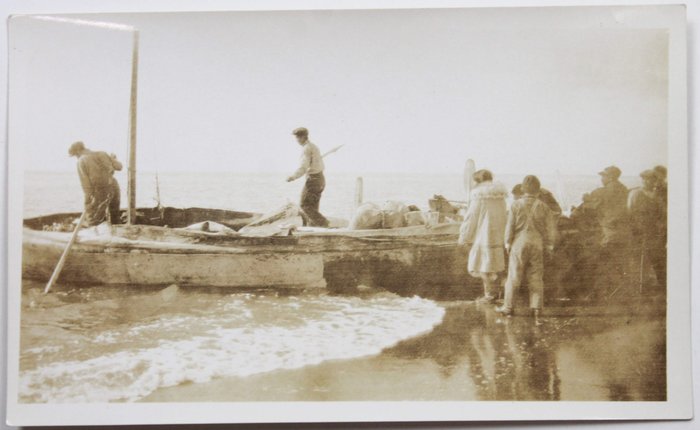
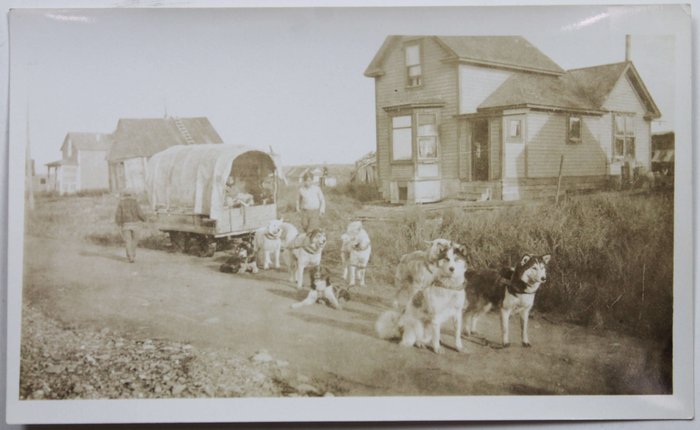
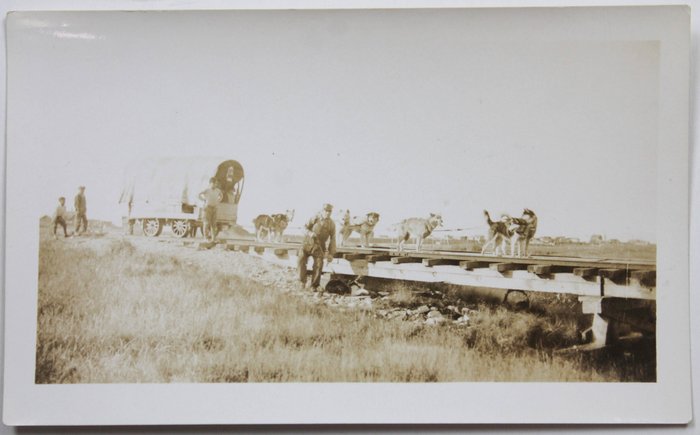
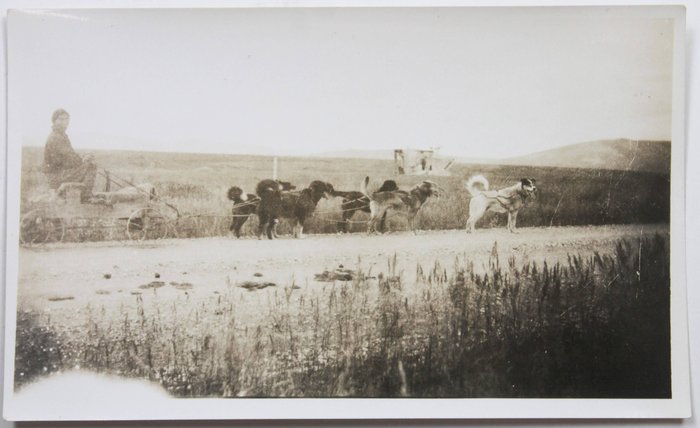
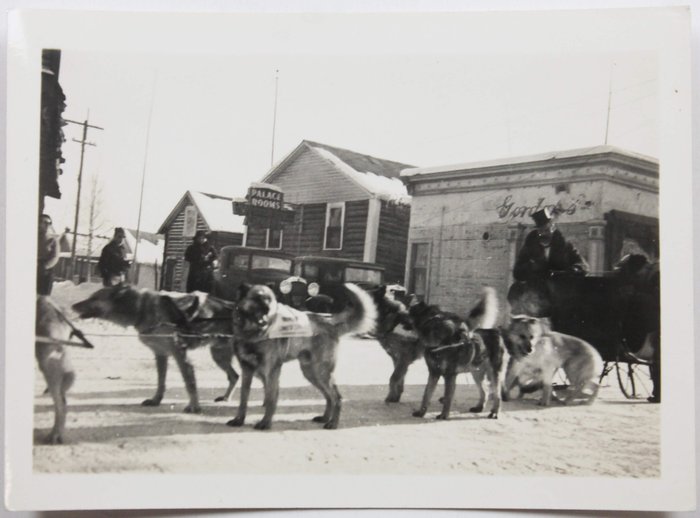
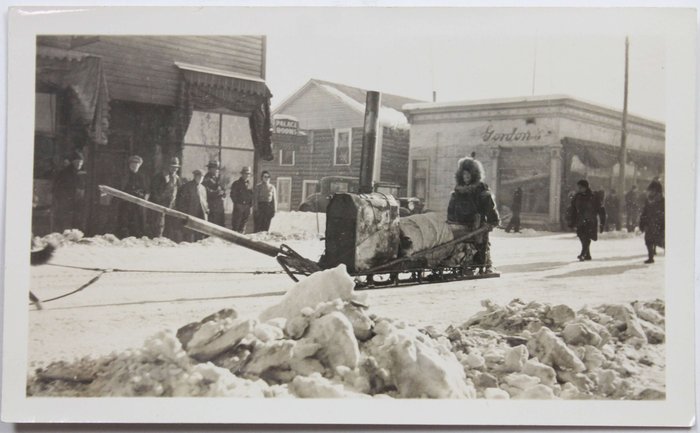
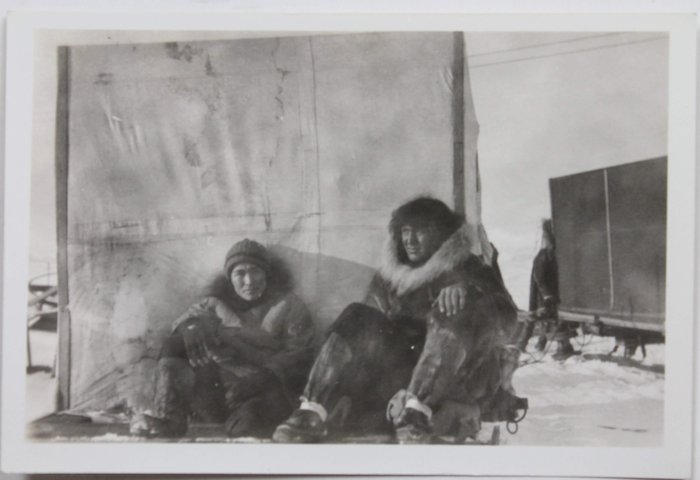

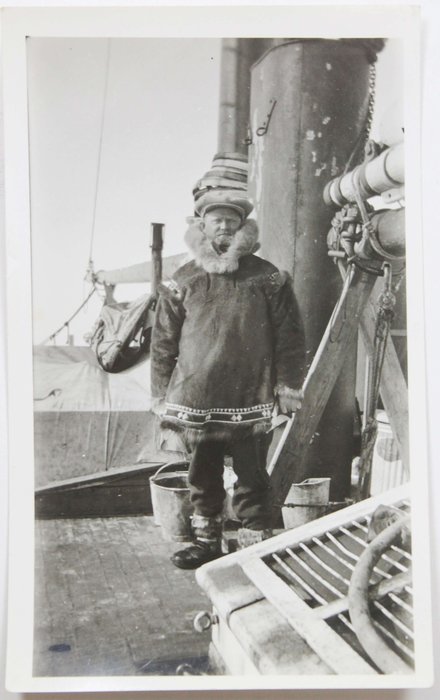
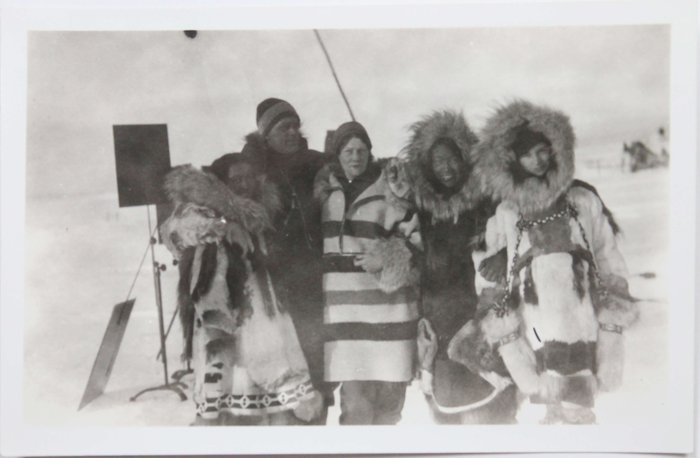
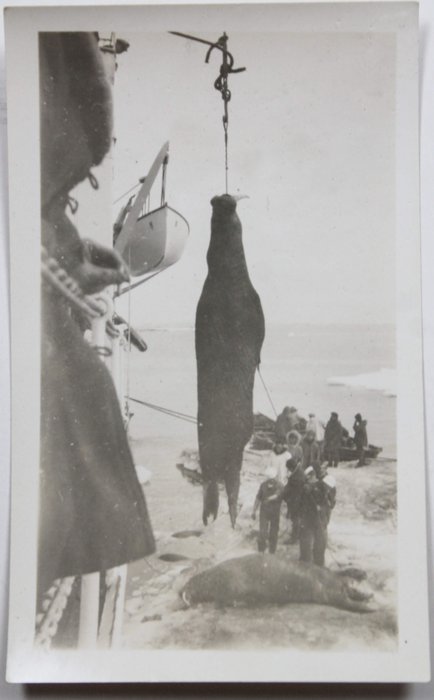
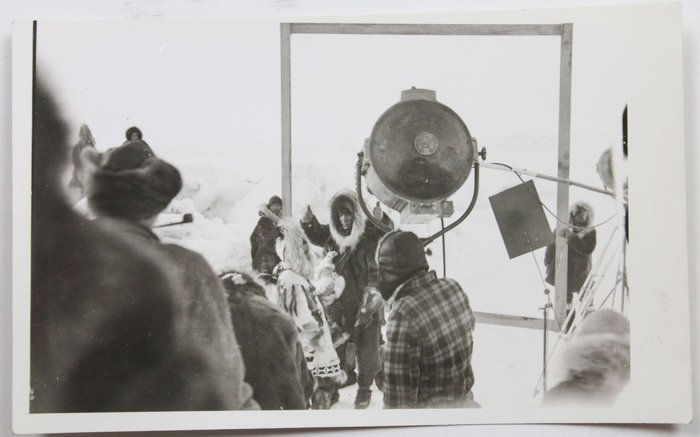
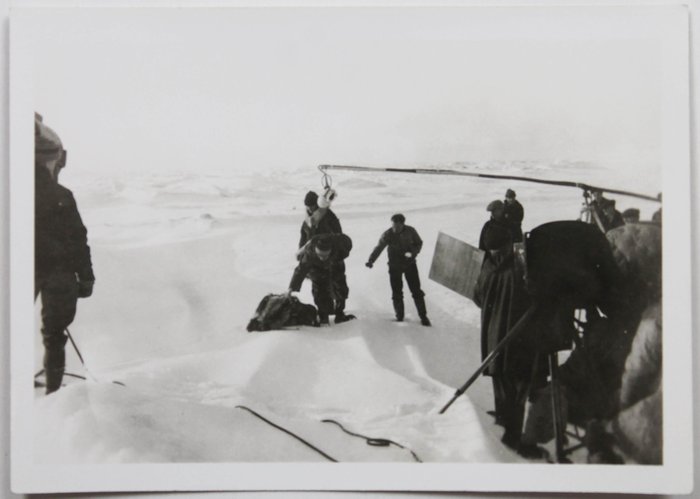

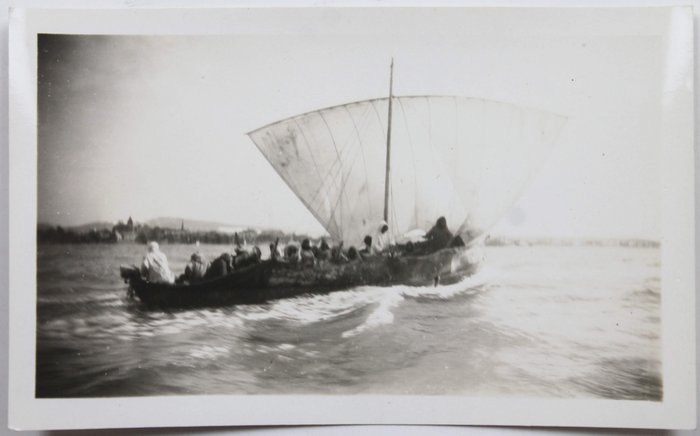
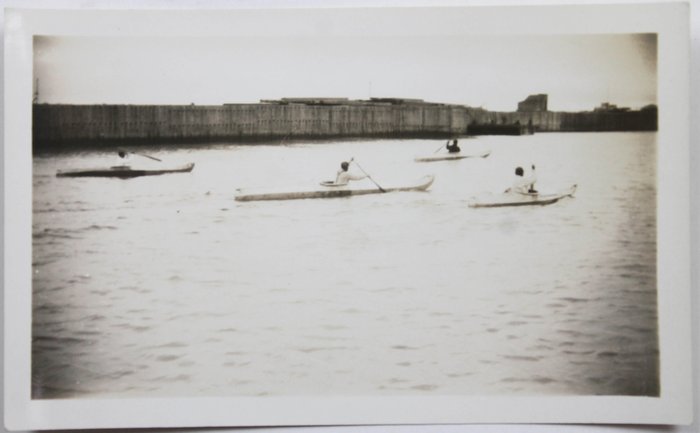
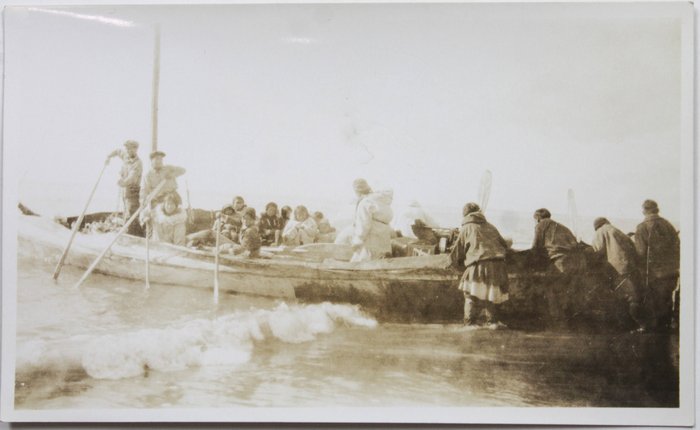
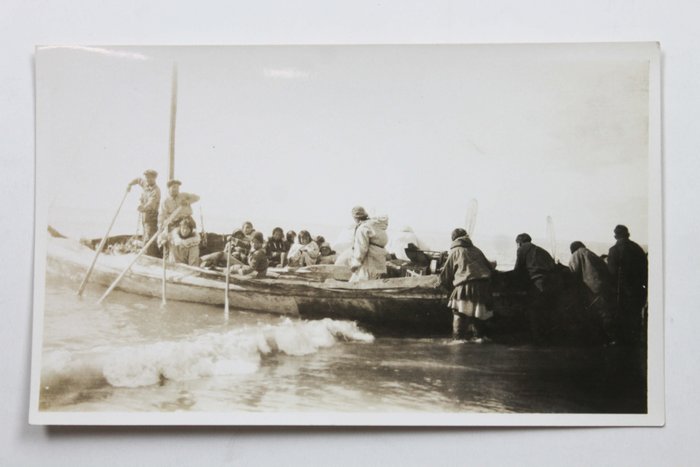
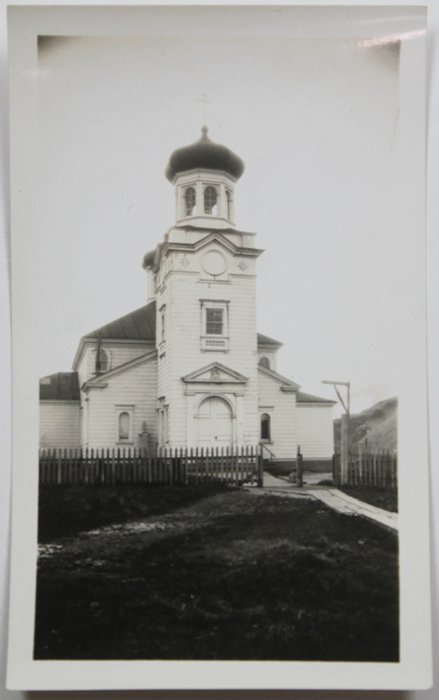
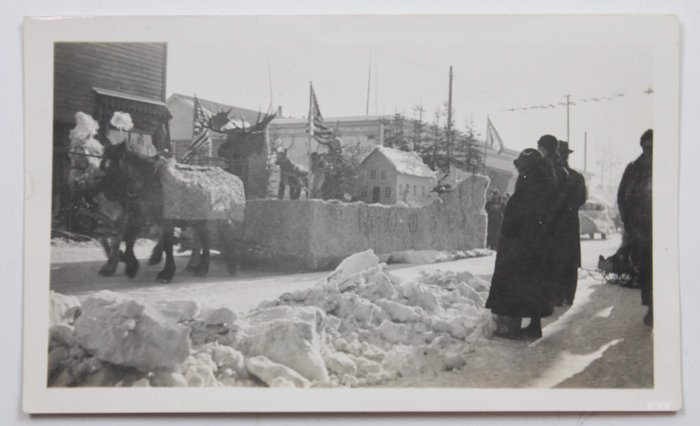
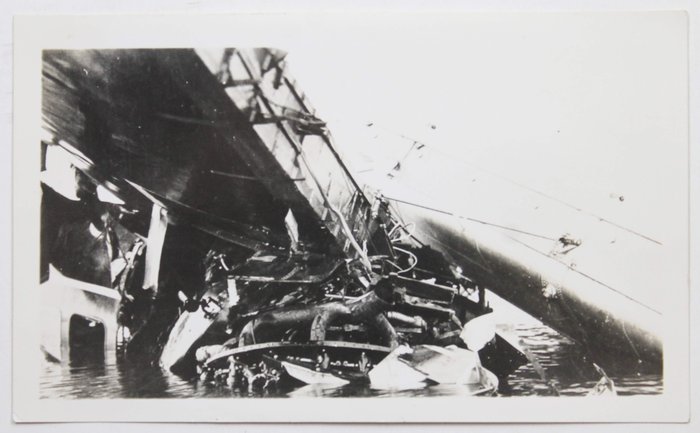
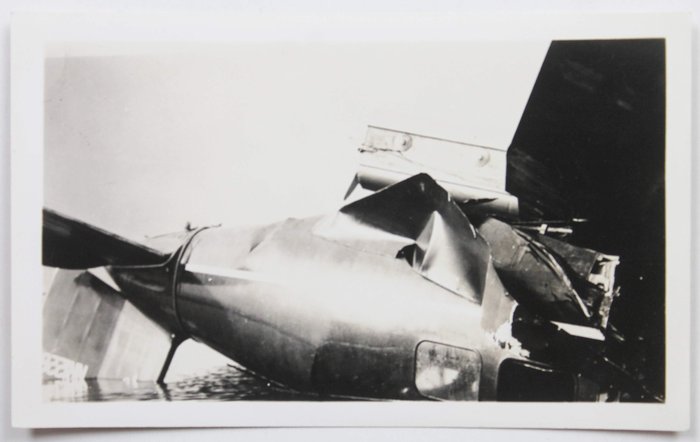
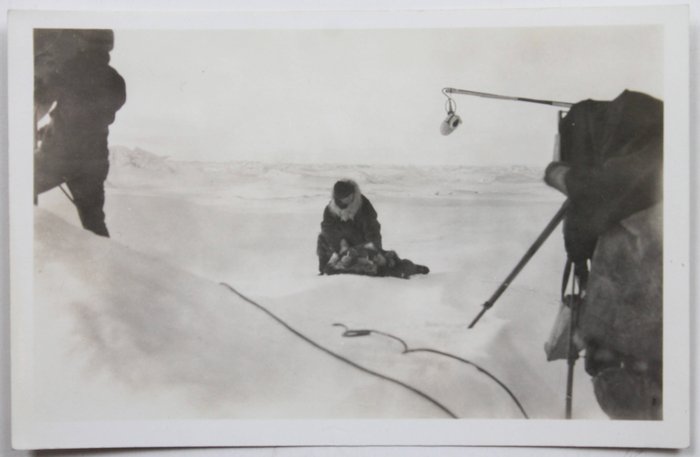
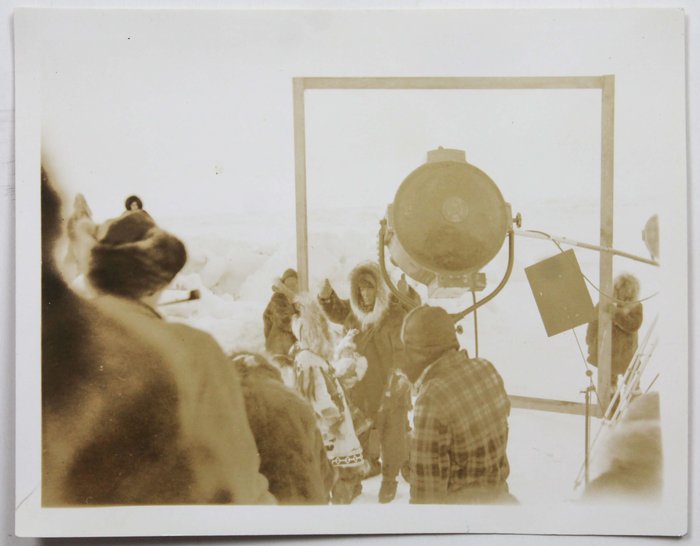
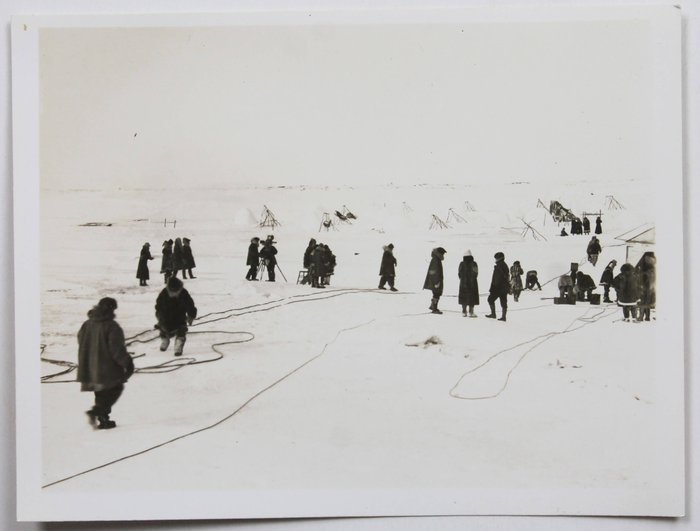
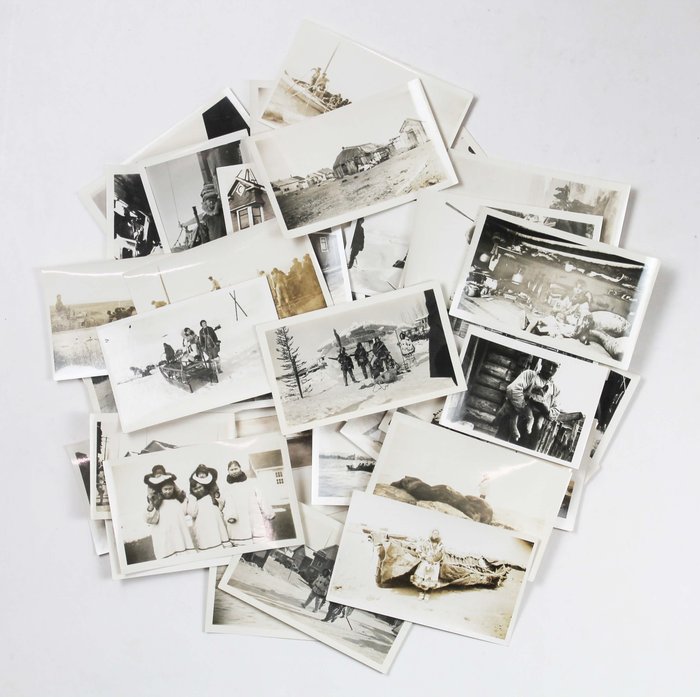
#PC52
1932-1933
Forty-eight loose gelatin silver photographs: thirty-five larger ones from ca. 8,2x10,6 cm (3 ¼ x 4 in) to ca. 6,9x11,4 cm (2 ¾ x 4 ½ in), six smaller ones ca. 6,3x8,8 cm (2 ½ x 3 ½ in), the rest of the photos ca. 6,9x10,9 cm (2 ½ x 4 ¼ in) or smaller. No captions. Several photos with mild silvering, but overall a very good collection of rare strong photos.
Historically interesting extensive collection of original photos, documenting the making of the first-ever big-budget motion picture filmed entirely in Alaska.
“Eskimo” is an American Pre-Code drama movie and the earliest feature shot in a Native American language (Inupiat). The film was adapted from the books by the Danish explorer Peter Freuchen and directed by W. S. Van Dyke in 1933. “Eskimo” explored the cultural divide between Alaska’s indigenous population and the white settlers and mostly casted native actors, including Hollywood star Ray Mala and Lotus Long. The filming took place in Teller, Nome, between 1932 and 1933, with various scenes also shot at Cape Lisburne, Point Hope, Cape Serdtse-Kamen, and Herald Island. “Eskimo” received critical acclaim upon its release in November 1933 and was awarded the first-ever Oscar for Best Film Editing.
The collection includes forty-eight vibrant photographs taken by an amateur photographer (likely a crew member) on the set of “Eskimo” in northwestern Alaska in 1932-1933.
About nine candid individual and group photos show Ray Mala, Lotus Long, Peter Freuchen, W. S. Van Dyke (director), and other cast & crew members posing by igloos, sleighs, etc. Ten lively vernacular scenes of polar bear, walrus, and moose hunting vividly portray native actors in parkas and mukluks sailing umiaks on the Chukchi Sea. At least seven excellent photographs, likely taken in Teller, offer behind-the-scenes glimpses of Mala and Long in Inuit attire, alongside the film crew building snow houses and managing movie equipment. Especially interesting are five well-executed close-up photos of native extras processing prey with an uluit, posing in an igloo (with a clearly visible interior), cradling Eskimo babies, standing by an umiak, etc. There are also two graphic photographs of a plane crash, potentially involving one of the production crew’s aircraft. The rest of the photos show summer Eskimo tent houses (with walrus meat drying on the rack), native men mushing dog sleds (both in winter and summer), a walrus being hoisted by a crane, Moose Day celebrations, the Church of the Holy Ascension in Unalaska, and a transport ship, possibly Victoria, which took the cast & crew from Seattle to Nome.
Overall, historically interesting collection of forty-eight gelatin silver photographs documenting the making of one of the earliest Oscar-winning films in Alaska.

